This year for the first time ever, HDNA and HDUK chanichim on Shnat, do their messima (educational work) as full on Communarim (ken leaders) in NOAL kenim.
In past years Shnatties did have messima with NOAL, but this year is the first time they take on full roles and responsibility together with NOAL communarim, surely this historic change does not come easily, and the transition can seem daunting, but the relationship between the movements and the value of the experience for the shnatties themselves in invaluable.
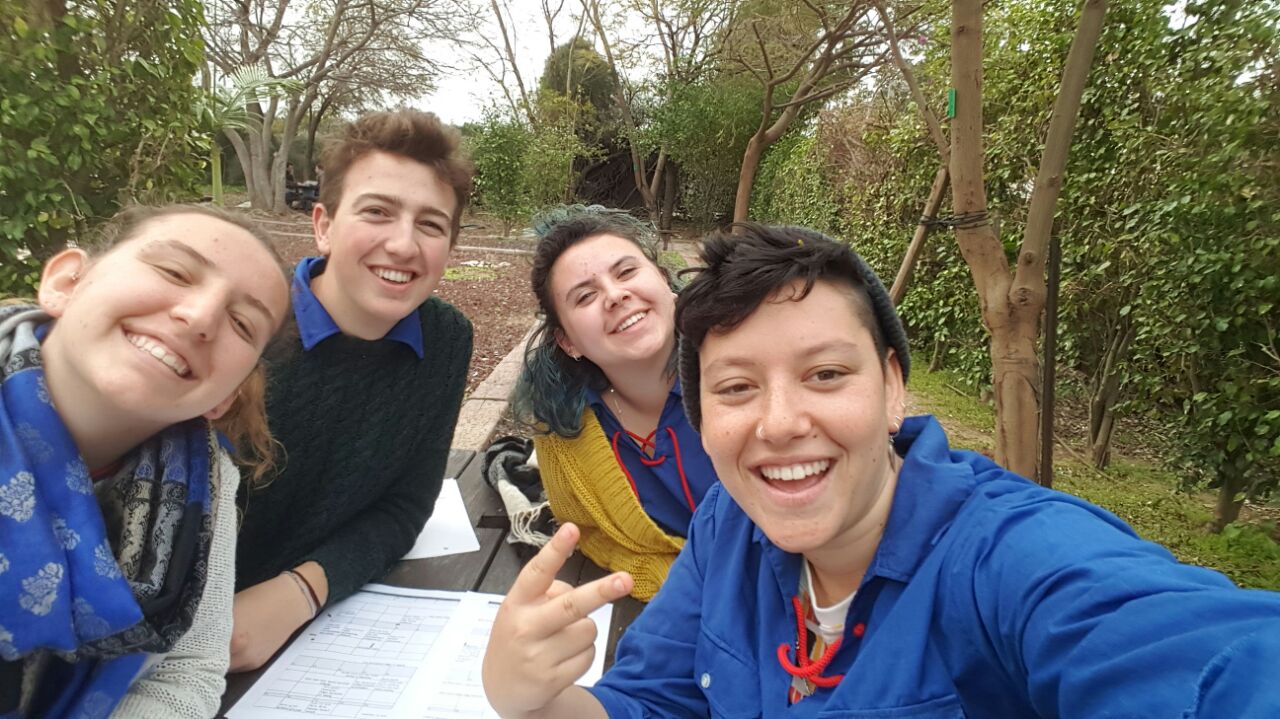
Meeting with Nai Ben Danan their rakezet, to go over things, plan and talk
The new HD communarim have meetings and Yom Machoz once a week, and lead older chanichim in the kenim together with NOAL communarim, they also run English peulot (activities) for younger chanichim.
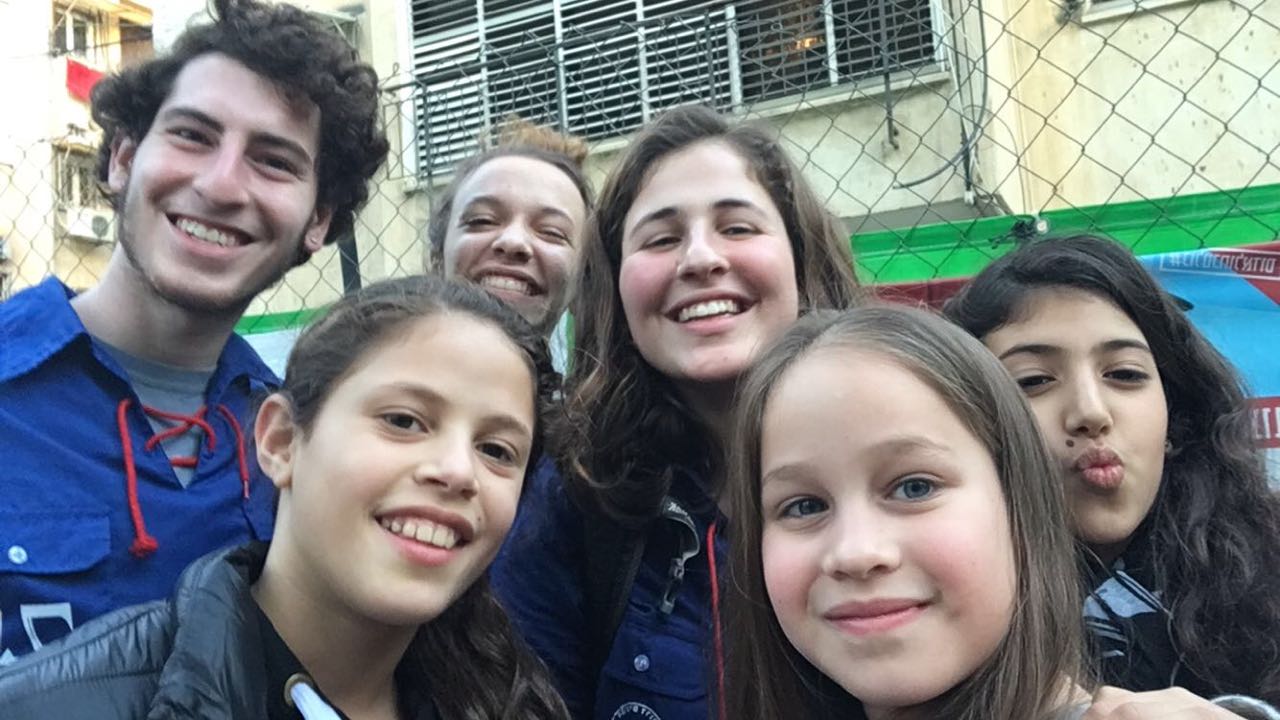
Bonding with chanichim
But why listen to us, when you can read what the Habonim Dror Communarim have to say themselves! Here is a short description from kvutzat Sha'al:
"This is kvutzat Sha’al giving you an update on how we are doing in Chava so far! We moved into our house about two weeks ago, and it has been a real adventure learning how to live independently. We have put in a lot of effort into making our house a home. We brought our couches into our second floor living room by hoisting them through the window. We also somehow got our fridge up the very narrow staircase that leads to our second floor kitchen. Our walls are beautifully decorated with collages we made from old magazines. We have avocado toast for breakfast, central heating in our rooms, and a basketball hoop and mini trampoline outside. And the occasional tortoise wanders through our yard!
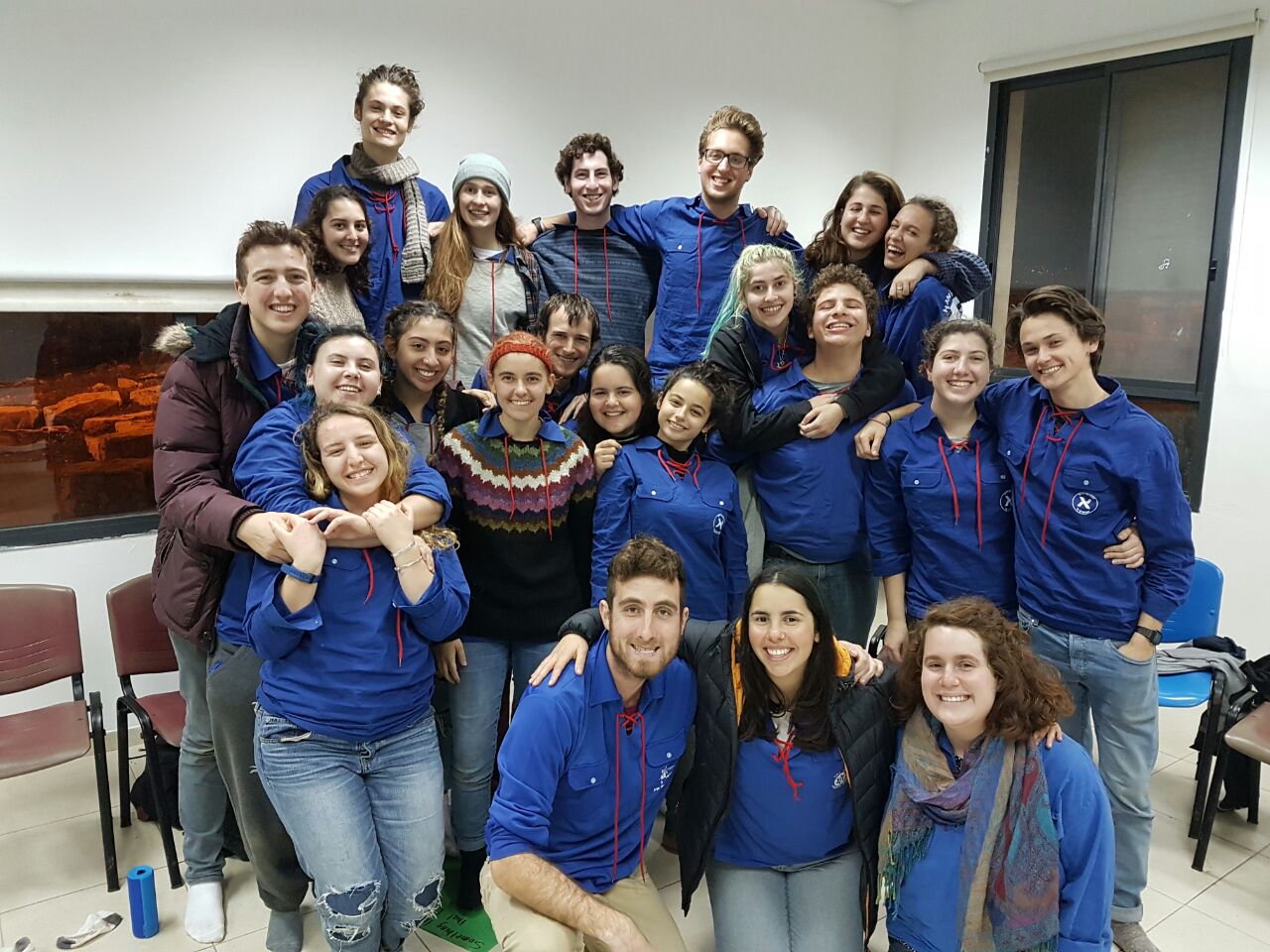
Cooking is proving to be a really fun and exciting new challenge for us. We like to make lunches for the entire kvutzah the night before to take to messima the next morning. During our first day of messima, we had a slight mishap in which our hard boiled eggs came out much less hard than we imagined, but luckily we were able to alert everyone via our Whatsapp group chat before any real messes were created. Going to messima in the kenim is something we are all overwhelmed by, but we are excited to get into the flow of how NOAL kenim work. It is hard for us that we all come home at different times, some people not until very late at night, but we are always so excited to welcome each other home. We really like being in tzvatim with garin Gavan, our Israeli kommunarim, and are so thrilled to be creating these friendships and connections with people our age in our sister movement. We hang out at each other’s houses, plan peulot, and eat each other’s food.
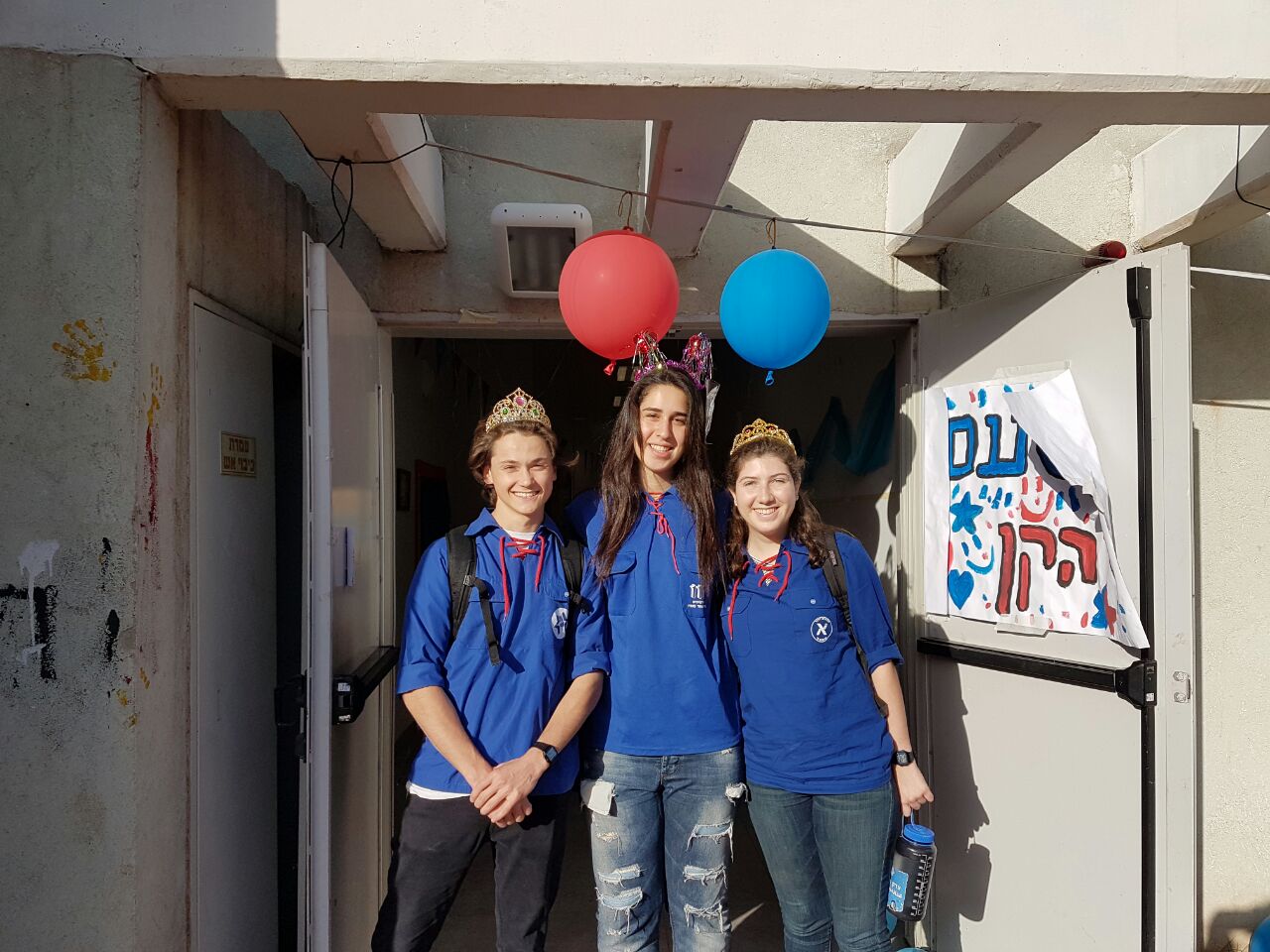
"We really like being in tzvatim with garin Gavan, our Israeli kommunarim, and are so thrilled to be creating these friendships and connections with people our age in our sister movement. We hang out at each other’s houses, plan peulot, and eat each other’s food." Habonim Communarim being welcomed to the ken in ken Kfar Saba Yashan
We have Yom Machoz every Monday, which is when all the kommunarim and shnatties from each machoz get together and have peulot run for them about hadracha and other topics. For the second half of the day, we have ulpan with just our kvutzah, which is comprised of playing many games in Hebrew. We are working very hard to improve our Hebrew, and are becoming more familiar with NOAL.
We are loving Israeli music also! Some of our favorite songs are Messiba B’Haifa and Kvish HaChof.
Sending love from all 14 of us!
-Sha’al
See more pictures:
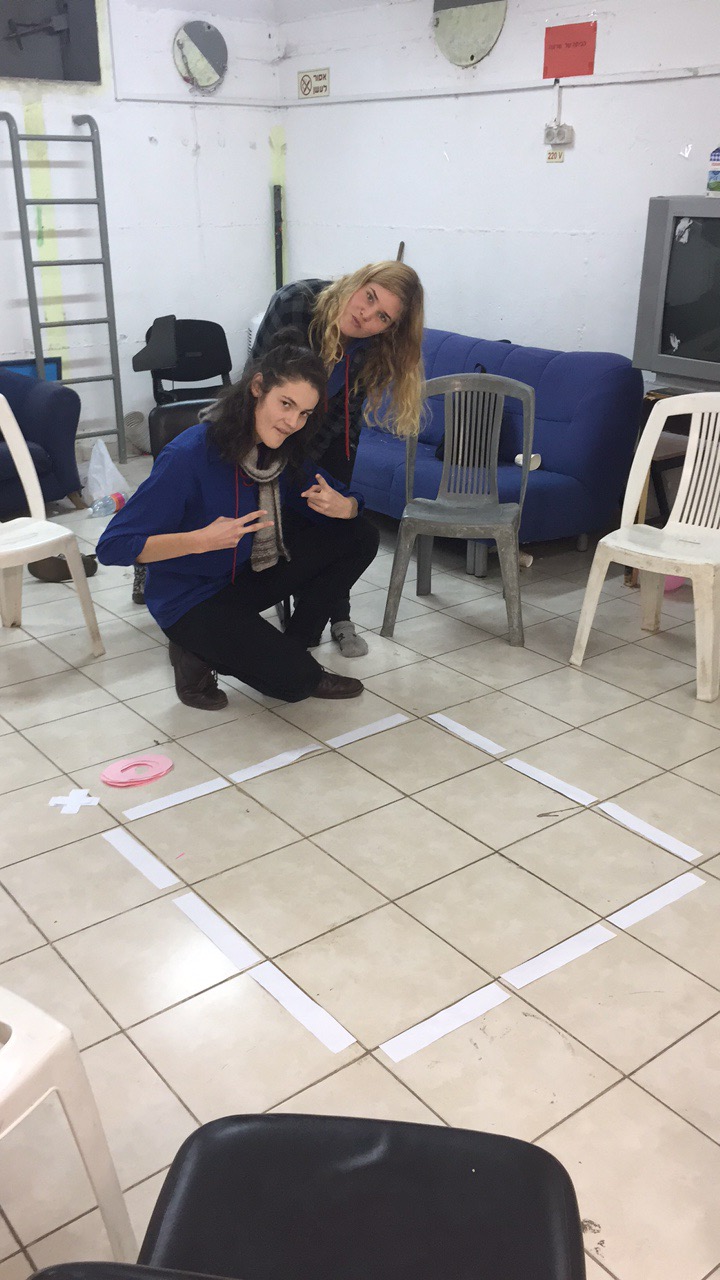
Getting ready for chanichim
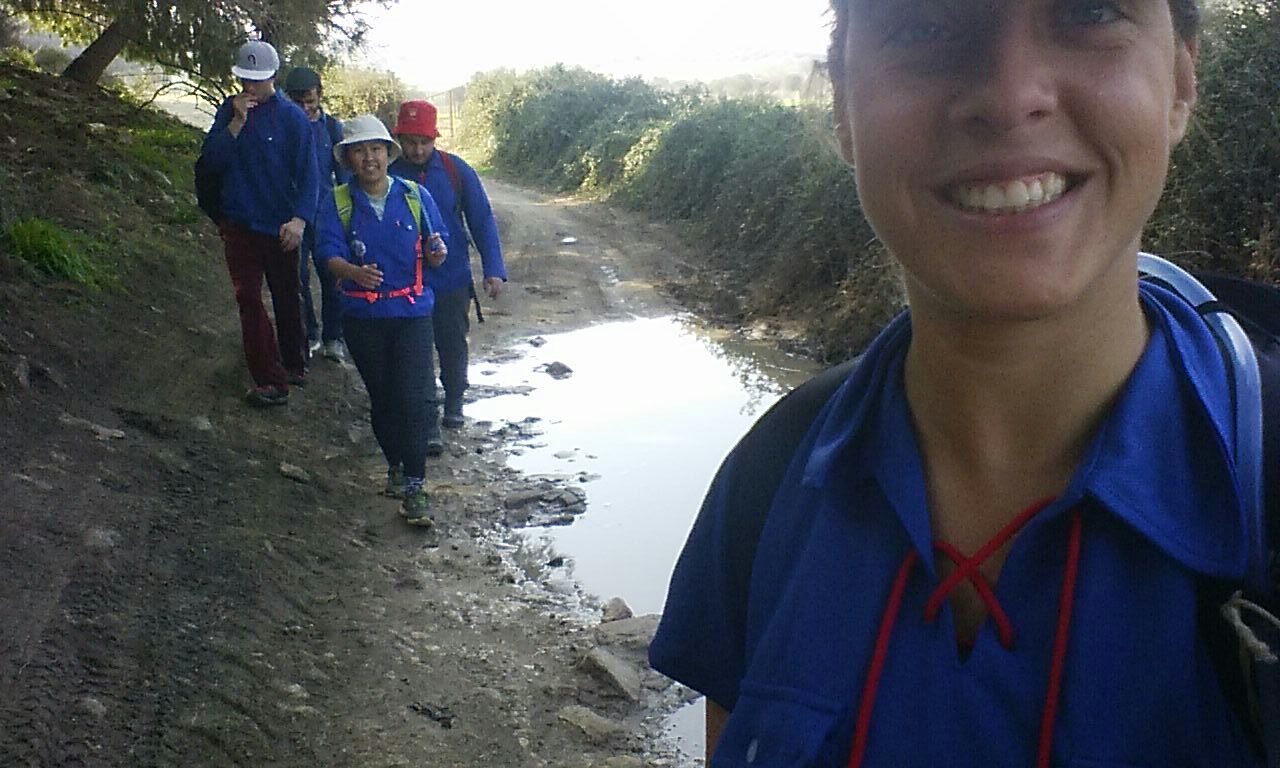
Some hiking
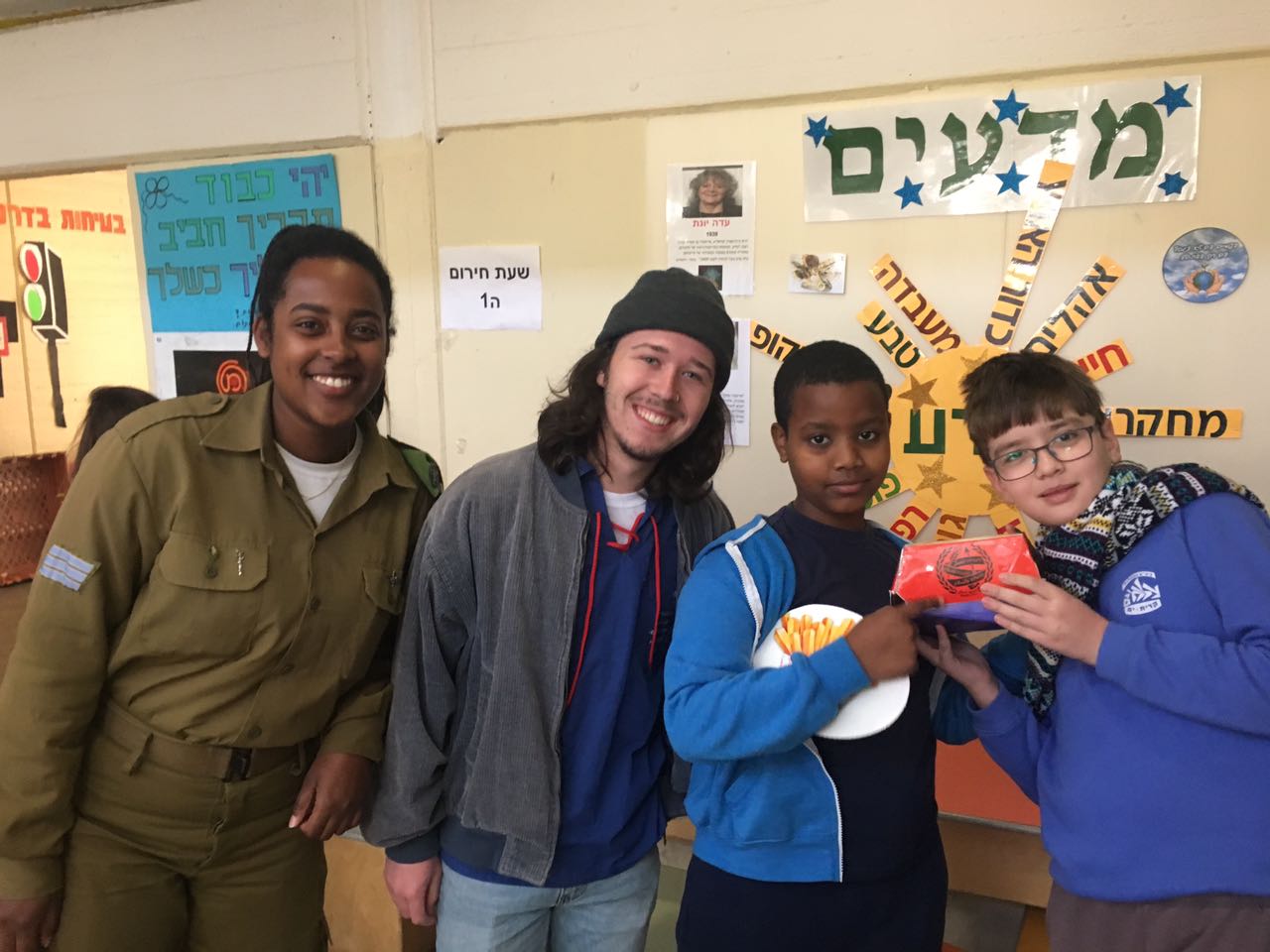
New and exciting tochniot on the subject of sustainability and green kenim!
The woodworking volume, and the greenhouse and garden volume!
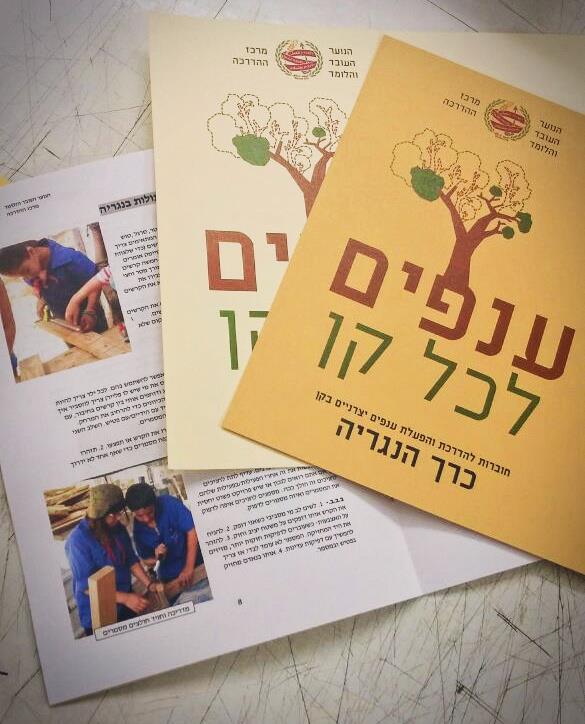
This week a training (hachshara) day was held for rakazim of green snifim (movement branches), a project possible by the cooperation of MATAN (the council of youth movements in Israel) and the office of environmental protection, for budgeting youth movement branches that educate towards sustainability and environmental protection through unique educational projects.
The NOAL hadracha center organized the day that was mean prepare the movements educationally and organizationally, 50 rakazim attended the day from almost every youth movement in Israel – Hanoar HaOved VeHalomed, the Tzofim, Hashomer Hatzair, Bnei Akiva, Ezra, HaMachanot HaOlim, HaIchud HaChaklai (the farmers union movment), and HaNoar HaLeumi. NOAL has about 15 kenim in the project.
The entire day dealt with the subject of workers and labor as a part of sustainability. The rakazim had a lecture by Galit Harran (rakezet of "Yotzrim Sviva – the hadracha center for sustainability, and member of Dror Israel) about the connection between sustainability and economics, society and environment, and about sustainability as a way to create a better society.
On top of that, additional lectured were held about movement project that combine labor and sustainability – Dror Educational Orchards, Kvutsat Almog for labor education, and the productive branches in the different kenim in NOAL. the lectures dealt with how labor is also an educational, empowering, imagination building thing, that can develop the ability to dream, allows to break social norms like gender and economic classes, and the value of working and labor.
The rakazim ended the day with creative workshops by "Yotzrim Sviva", that were about how to create a water recycling garden in a place with no yard, and how to build furniture from wood pallets that could be heading to the landfill instead.
חוות ההכשרה בחולון, שכבר 12 שנה מאכלסת גרעינים שונים, עברה שיפוץ נרחב ומושקע!
החלפנו את כל הריצוף של החווה, את המטבח והדלתות. התקנו גופי תאורה חדשים, צבענו את כל הבית, תיקוני חשמל, סידור החצר ועוד..
השקענו משאבים רבים בשיפוץ והוא ארך כשבוע וחצי. השיפוץ בוצע ע"י מספר קבלנים בשיתוף פעולה עם שני חברים יקרים מדרור ישראל, גל דאול ונדב שניידר, ועם חניכי גרעין נוארה שבאו גם לימי עבודה.
ומה בינתיים עשו חניכי חוות ההכשרה בחולון? אל דאגה, בזמן הזה הם התארחו אצל גרעין מיתר בחוות ההכשרה באזור ומשם המשיכו להדריך במשימות שלהם בקיום משותף יפו ובקן רמבם, חולון, רמ"ז, באר יעקב, רמת יוסף ותל גיבורים.
קבלו את התמונות של לפני ואחרי:


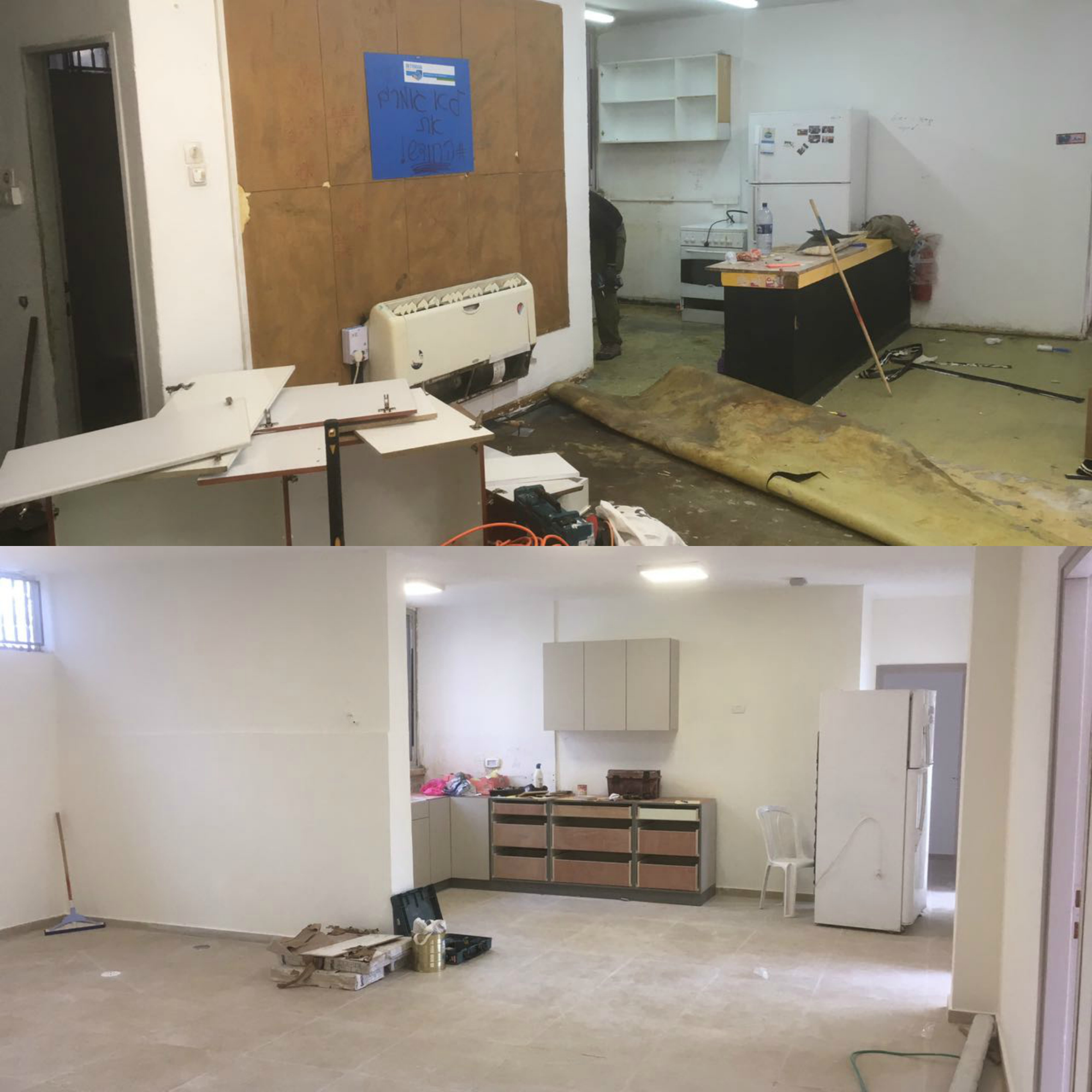
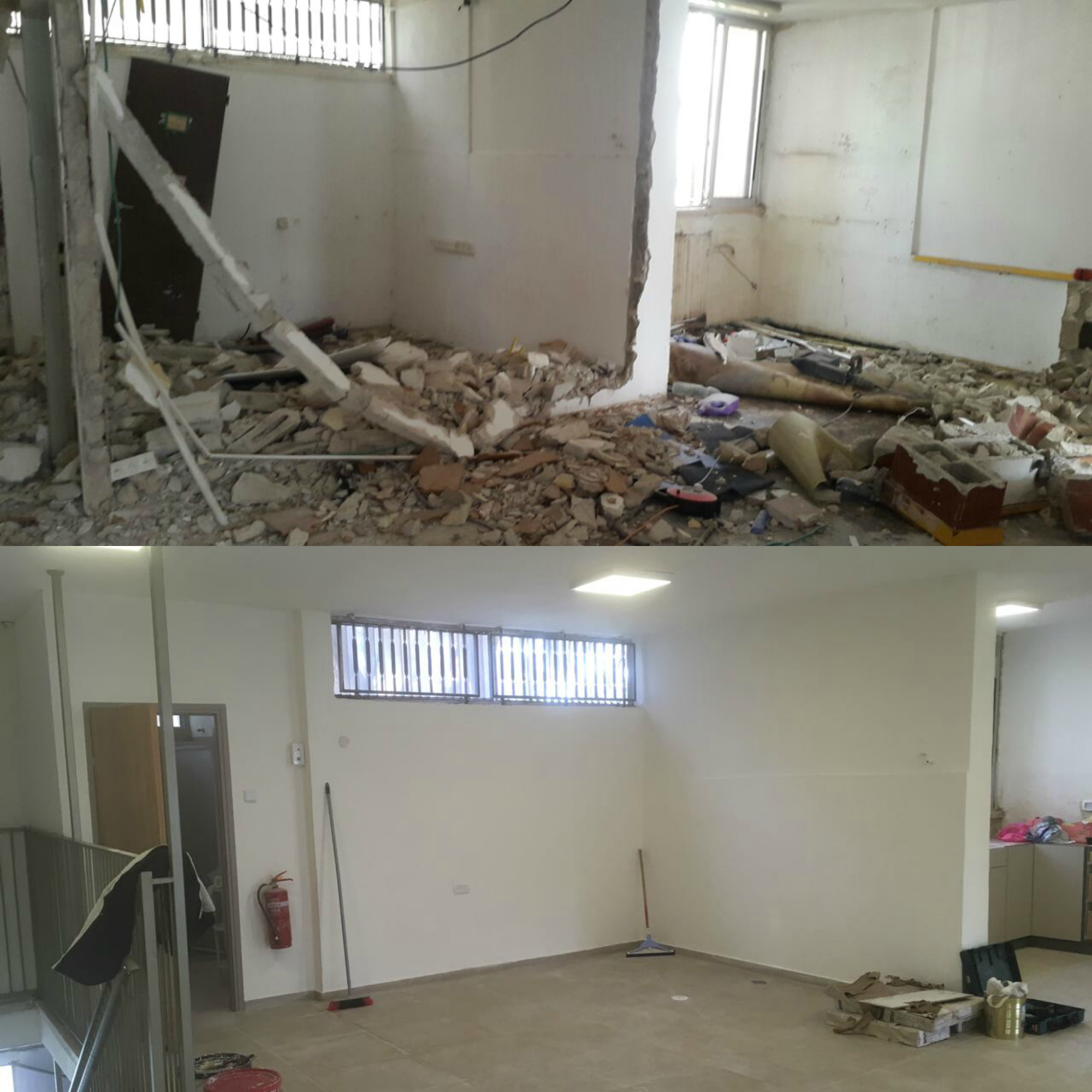
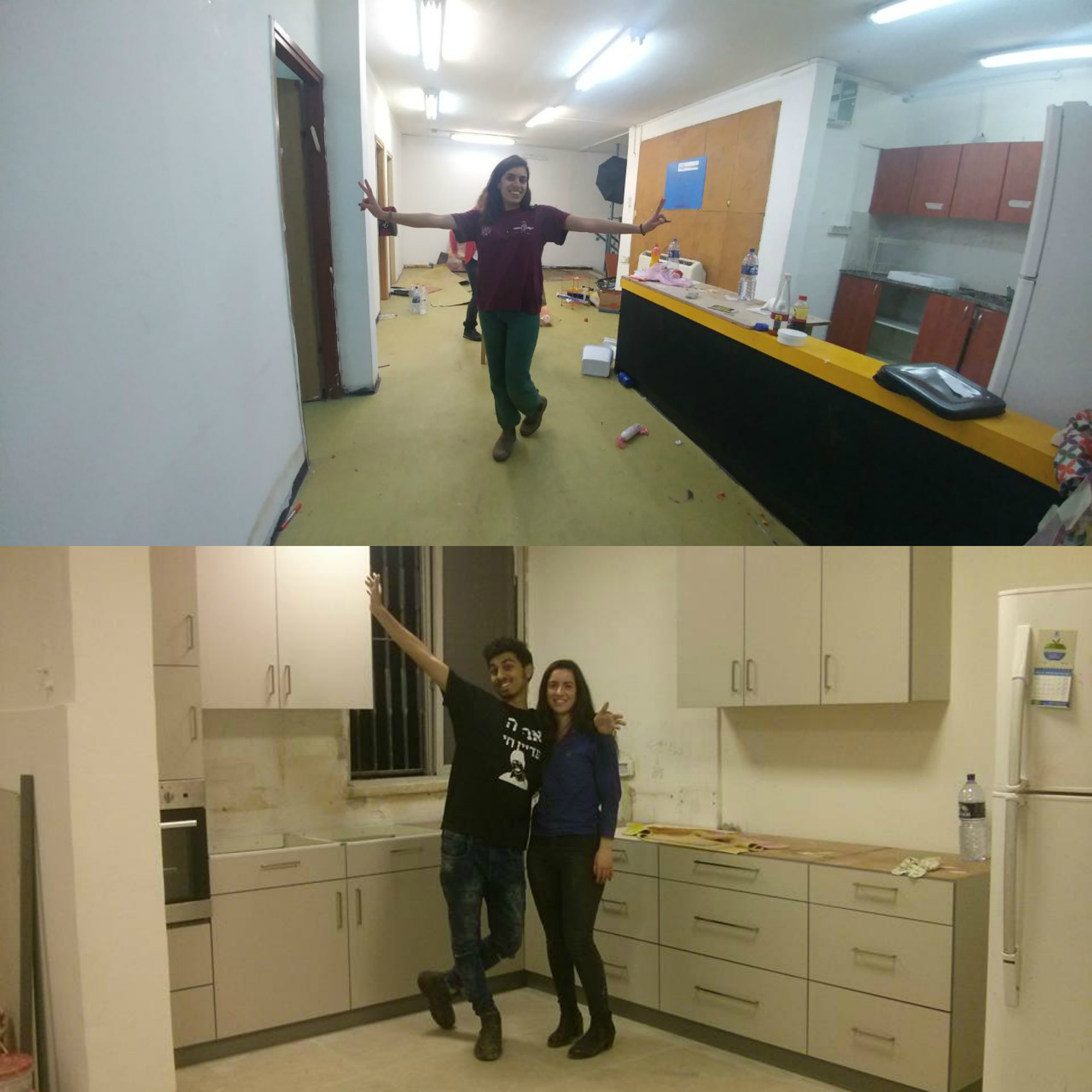
When I was given the opportunity to go and take part in the machaneh of Habonim Dror Southern Africa, I was excited and apprehensive at the same time. Having just been a Shnat madricha for the previous 10 months for a group from HDSA, I couldn’t pass up on the opportunity to meet my chanichim in their home environment and with their home movement.
The task that lay before me was 4 weeks taking part in what has often been described as ‘the best machaneh in the world.’ I wanted to figure out if this was truly the case.
There were several faces to my shlichut. I was there as a shlav bet Madricha for my Shnat chanichim, as a representative of Dror Israel, as a former Rakezet Kaveret for previous Shnat schavot, a representative of the tsevet Mercaz hadracha of Habonim Dror and also charged with the task of being a madricha for the oldest chanichim on machaneh. The balance between these many faces of shlichut was a difficult task at times, but also allowed me to broaden my ability to affect the movement I was meeting.
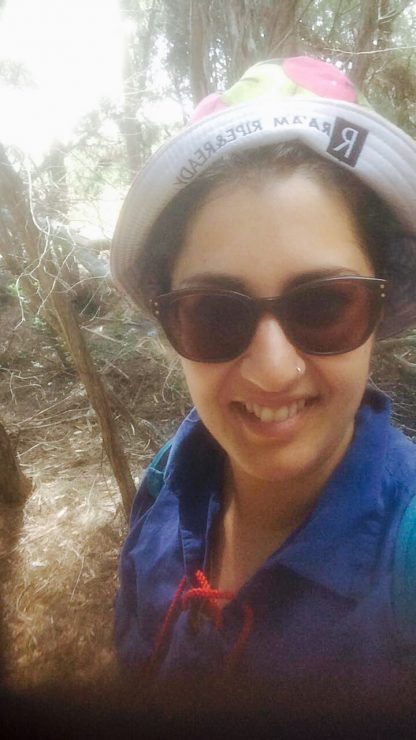
"The biggest thing I’ve taken away from this shlichut, apart from countless memories and new relationships, is the understanding that we do have the ability to dream and to realise anything we choose to. "
I didn't believe at the beginning of the shlichut, that in such a short space of time I would learn so much about the movement, the Jewish community and the place of Dror Israel and Hanoar Haoved in this story. I had the ability to bring to the chanichim an understanding about what NOAL is, why it's relevant to talk about and understand the youth movement and how it is directly related to their movement today. I gave a presentation about what it means to be a Habo activist in the world and used examples from Dror Israel such as ‘operation human warmth,’ the active involvement in leading the Summer 2011 social justice protests, and also the unionising of workers from numerous different companies. I ran peulot about the different elements of NOAL for the younger chanichim, and also related to it when running peulot about the Shnat programme. I felt these ideas and understandings were brought to the movement at just the time they needed it.
For the first time in its movements history, HDSA was using language with their chanichim and madrichim of ‘shivyon Erech haadam,’ ‘klaliyut’, ‘Manhig-shutaf,’ and it was obvious the impact it had not only on the chanichim but also the Bogrim body, who chose to act on these values through changing certain given structural realities in the movement. This came in the form of more partnership between people who chose to run for tafkidim together and a changing structure of the leadership body to allow for people without tafkidim to sit on the council.
By far the most exciting element of the shlichut was feeling a part of this movements change towards a positive future based on values such as shituf, Zionism and Judaism as well as hagshama. Their mazkira arrives shortly to Israel on an Aliyah flight, to join a kvutsah of Habonim Olim in Haifa. She will be the first to do so since the creation of the tnuat ha Bogrim of Habonim Dror nearly 20 years ago. This is a symbol of the changing times in the movement in South Africa. I sat there and looked around often and saw real partners, not just in the upbuilding of the movement of Habonim Dror Southern Africa, but in shaping the future reality of the Jewish People and the state of Israel. As one of the Bogrim repeatedly stated again and again over the course of Machaneh, having recently been reinvigorated to be an active member of this movement; ‘we are at the bottom of the hill on an uphill slope.’ This gives cause for excitement in anticipation of the future for this movement.
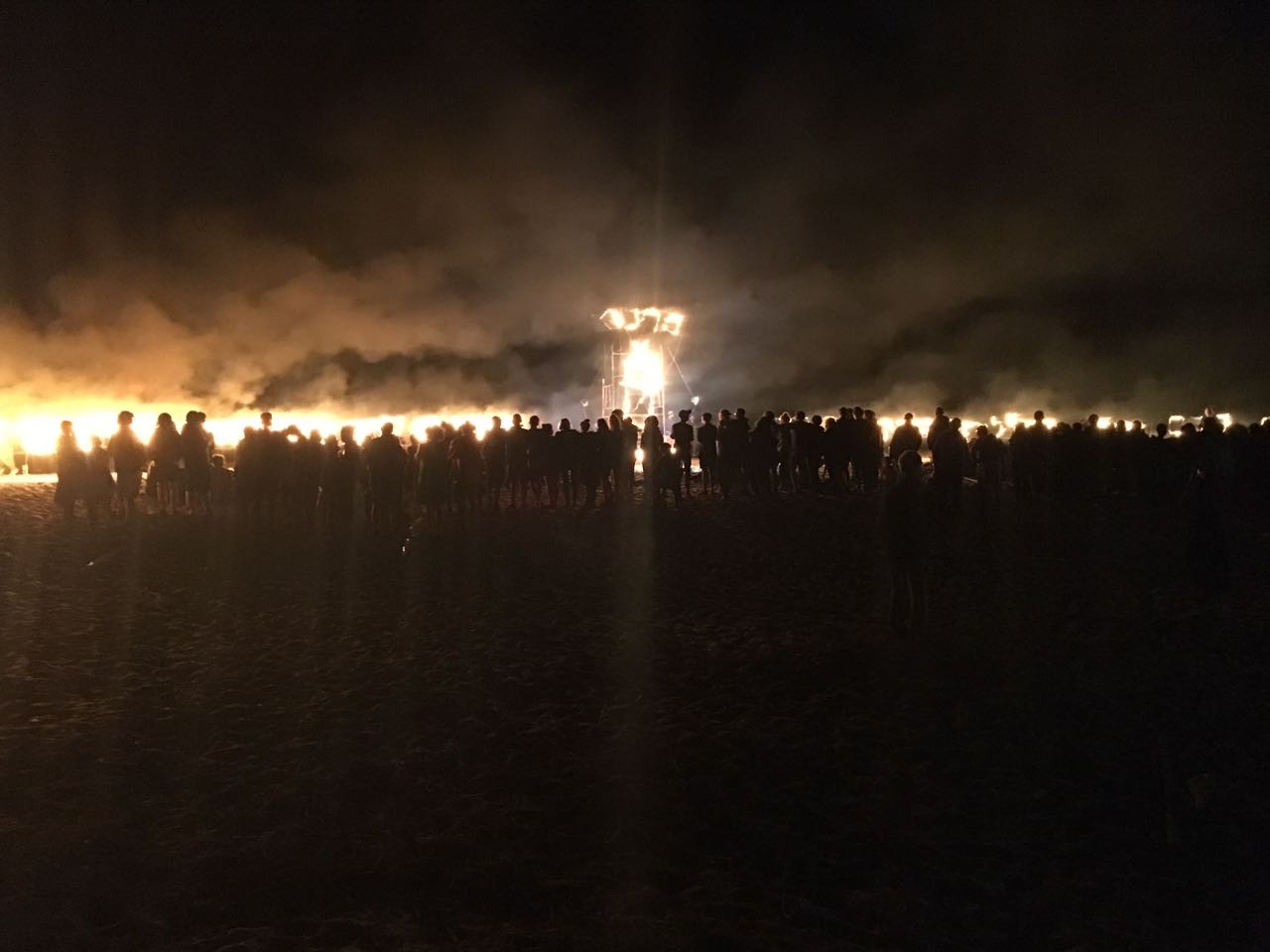
Mifkad esh – the last night of Machaneh, this year for the first time in years, the "Aliyah" fire writing was lit.
As I sit here writing this article, the members of HDSA are participating in their annual Veida and it promises to be one that will continue to shape the movement for decades to come; with proposals about feminism being added to their principles, redefining their relationship to Zionism and Hagshama, consecrating their relationship with Dror Israel etc. I hope this really is the start of a renewal for this movement on an ideological basis, and I am proud to have been there when it began. The biggest thing I’ve taken away from this shlichut, apart from countless memories and new relationships, is the understanding that we do have the ability to dream and to realise anything we choose to. And if we believe in it hard enough, others may start to believe it too!
אני מתרגשת וחוששת. גם השנה, בחרתי להדריך את המסע שלנו לפולין – המסע לגילוי שורשי המהפכה הציונית ומרד תנועות הנוער.
המילה "גילוי" היא שמעוררת בי רגשות עזים.
היום יתחילו הסמינרים של חניכי שכבת המעפילים, כחלק מתהליך הכנה ארוך ומורכב. אנחנו המדריכים עוסקים המון בשאלות, מהו תהליך ההכנה הטוב ביותר לחניכינו? מה עליהם לדעת לפני שנוחתים על אדמת פולין? למה כל חניכה וכל חברי הקבוצה צריכים לצפות?
כמדריכה – אלה השאלות הללו שמטרידות אותי.

אני רוצה שתהיה להם חווית גילוי אמיתית, שיהיה להם מעניין. אני רוצה שידעו על התהליכים שקדמו למחנות ההשמדה, שידעו על הבחירות האנושיות והחברתיות שקדמו לגטאות. אני רוצה שיבואו למסע עם "שק" של שאלות ומחשבות. אני רוצה שירגישו בטחון לדבר בקבוצה, שיגידו את דעתם, כי דעתם היא החשובה.
לשמחתי, אני לא לבד במחשבות הללו. איתי יש עוד עשרות מדריכים וכולנו רוצים שתהליך ההכנה יהיה מושקע, מעמיק, יצירתי ומעורר מחשבות.
בסמינר הקרוב נעלה ביחד קטעים מתוך המחזה "גטו" שכתב יהושע סובול על קורות גטו וילנה. גם נראה ביחד סרט שמנסה להבין את דרכי התעמולה, החינוך והטרור בגרמניה הנאצית.
שיא הסמינר יהיה תערוכה שבנינו במיוחד בשביל חניכינו.
חשבנו על כל התכנים שחשוב לדבר עליהם בתהליך ההכנה והקמנו תערוכה, חדר לכל נושא.
בחדר אחד הם יכנסו לסלון של משפחה יהודית בגולה שבן אחד מתבולל והבת – ציונית.

חדר אחר יהיה כמו קן תנועתי, כמו שחניכי מכירים, אבל הוא קן תנועתי בפולין.
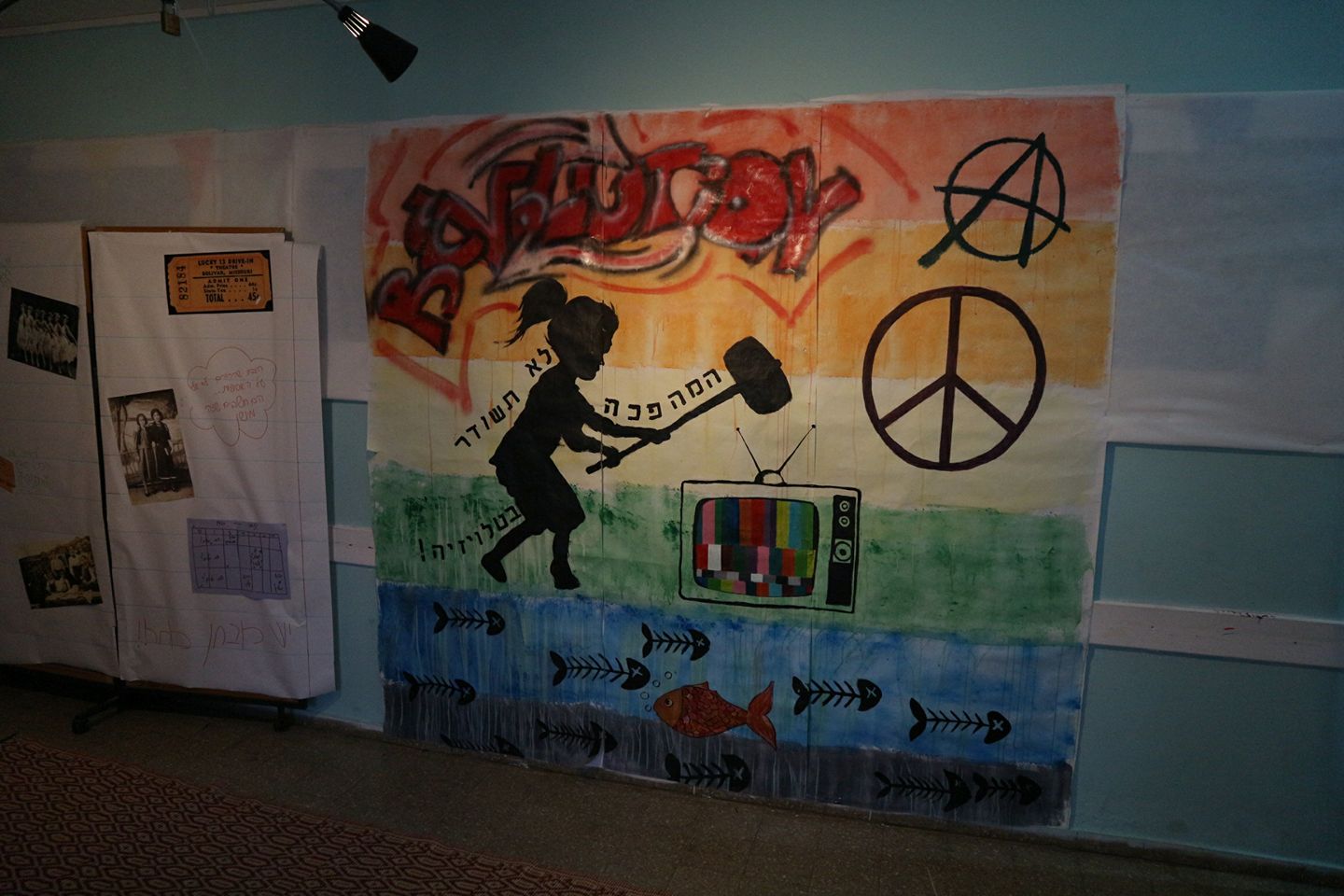
חדר אחר, עמוס וקשה, מספר על עליית המפלגה הנאצית לשלטון.
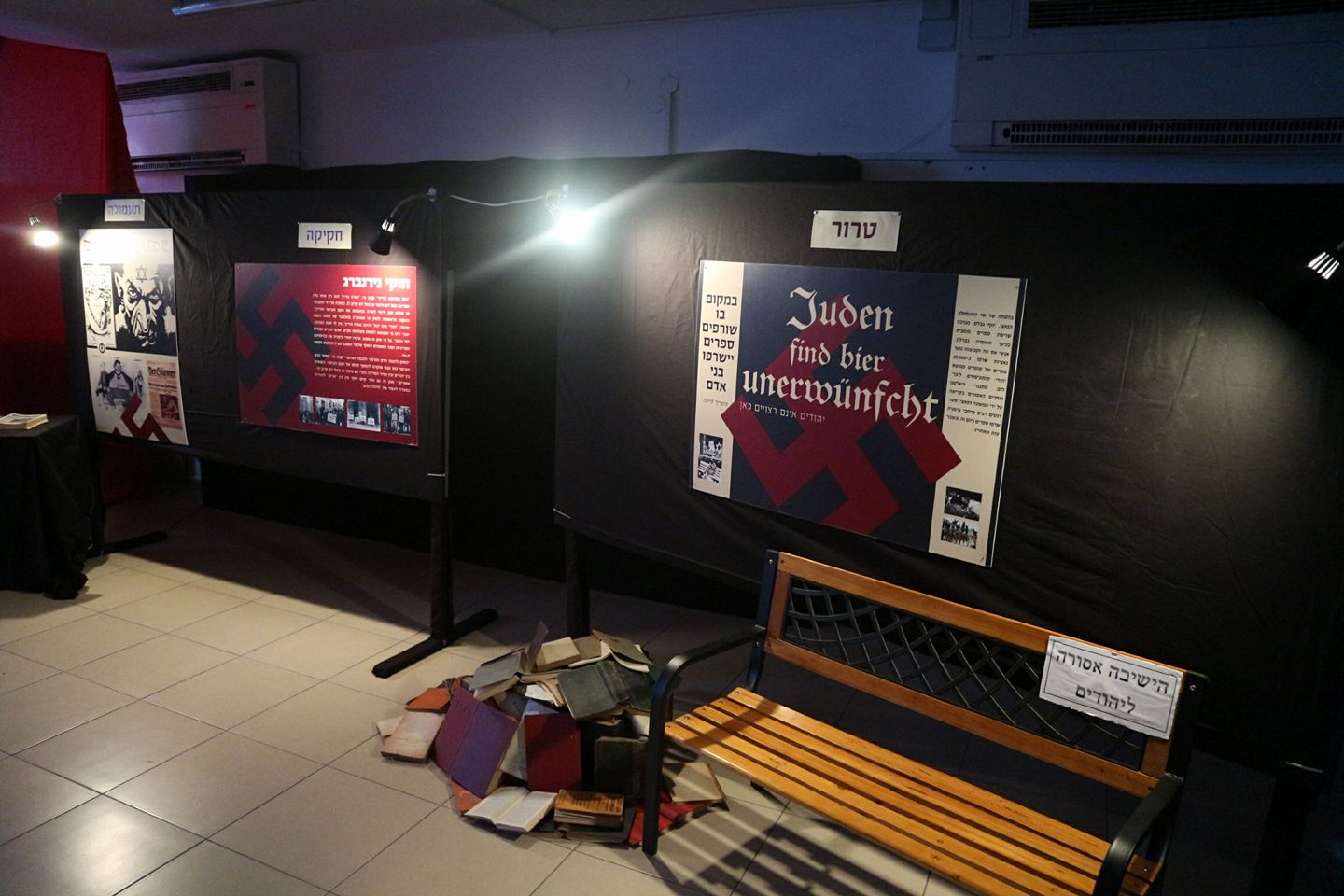
חדר נוסף וייחודי מספר את סיפורה של קהילת צפון אפריקה בשואה. סיפור שרבים מדי מבני הנוער בישראל לא שמעו עליו לפני.
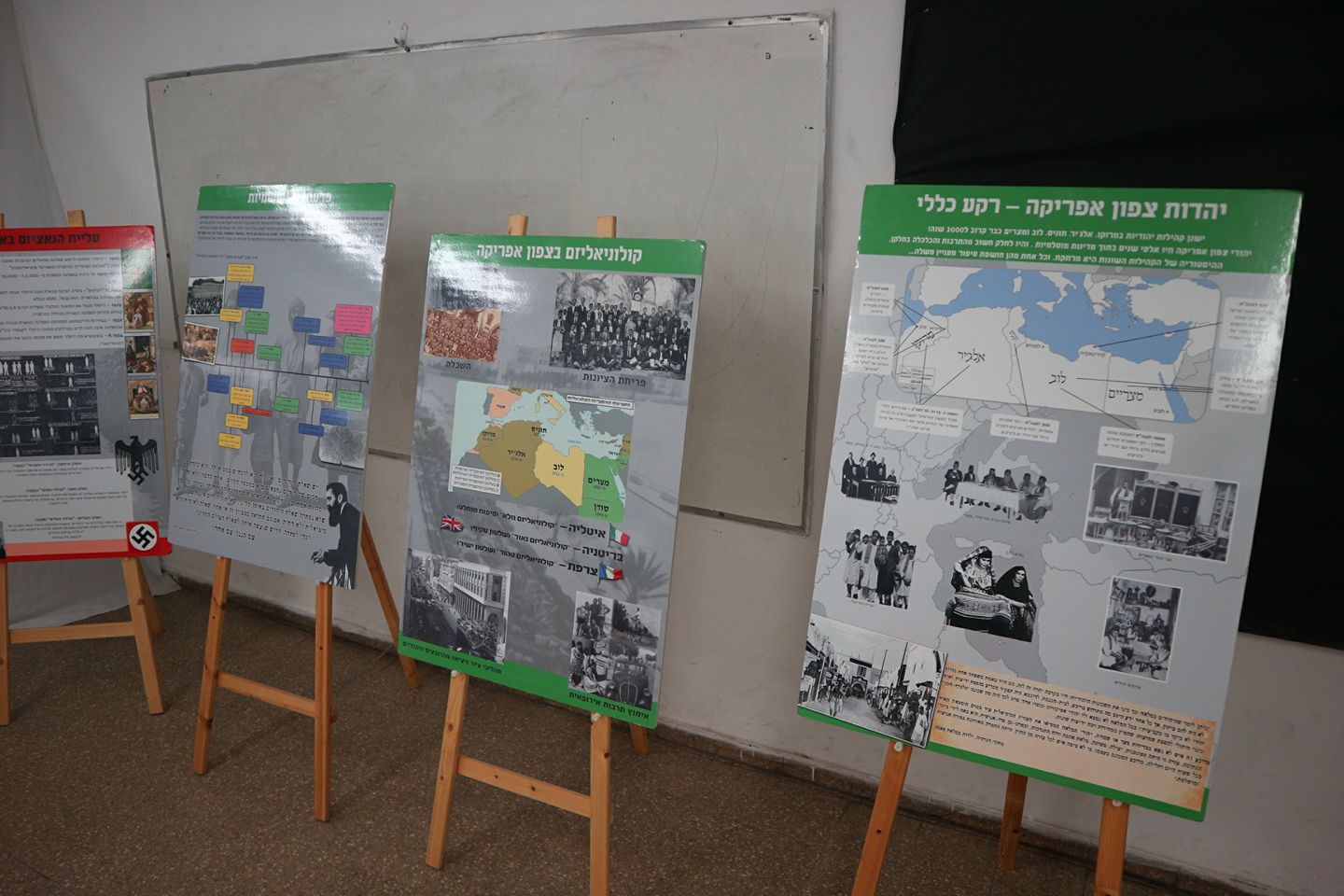
והחדר האהוב עלי הוא חדר שספר את סיפורה של תנועת דרור בפולין. אני אוהבת אותו כי הוא מזכיר לי את תהליך ההכנה שאני עברתי בכיתה י"א עם קבוצת שבים והמדריך, אלון ניסר.

אני זוכרת את התחושה שאחזה בי כשגיליתי את הסיפור על הנוער בגטאות. שהרבה לפני שהם התייצבו עם נשקם מול הנאצים הם היו, כמוני, חניכים בקן, מדריכים צעירים, מסורים לקבוצה שלהם ולחניכים שלהם.
כנראה שיותר מכל, אני מחכה בקוצר רוח לספר לחניכי על החבורה המיוחדת הזאת. שהמרד שלהם היה לפני הכל, "מרד של תקווה".
לעוד פרטים – כנוסו לעמוד באתר של המסע לפולין
לעמוד הפייסבוק של המסע לפולין – הסתדרות הנוער העובד והלומד
לעמוד הפייסבוק קרן הנצח לסבסוד מסעות תנועות הנוער הציוניות לפולין

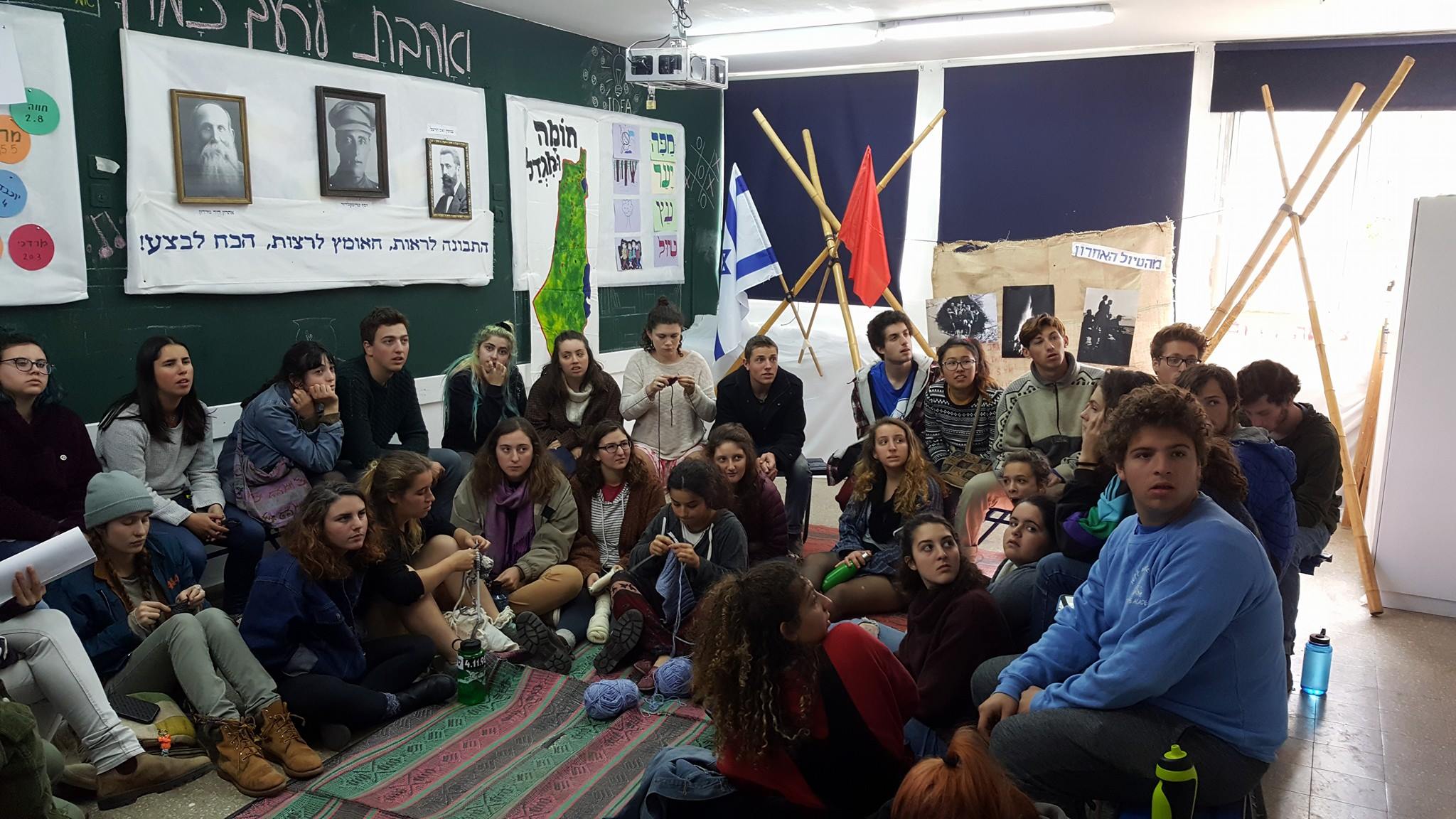
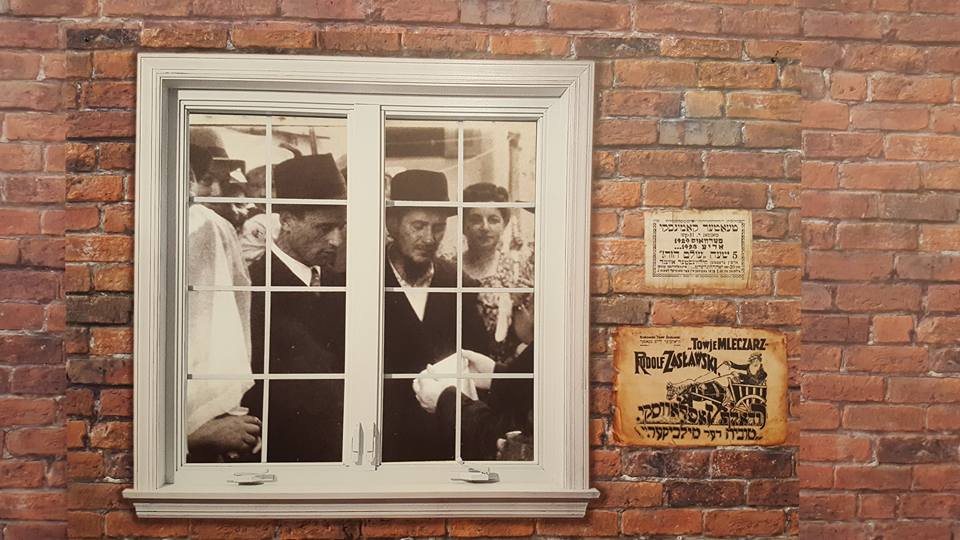
בשבוע האחרון התקיים סמינר עבודה משותף של מגמת הבנוי במכינת יפתח, מכינה קדם צבאית של דרור בתי חינוך ברביד, וקבוצת אלמוג – לחינוך עמלני בשכבת חוות ההכשרה. בסמינר הם נהלו שני אתרי עבודה – חידוש יסודות למבנה וסלילת שבילי מבנה המכינה החדש ברביד. בנוסף, הסמינר כלל שיחות על מה היא "העבודה הטובה" – עבודה ששוויון ערך האדם במרכזה וניסו ליצוק זאת במפגש ביניהם בסמינר.
הגענו השבוע לרביד לשבוע עבודה עם מכינת יפתח. הגענו כדי לעבוד עם בטון, בנינו יסודות לבית וסללנו שבילים. העבודה הייתה עליית מדרגה מכל מה שעשינו עד עכשיו. עבדנו במקצועיות ובאינטנסיביות ובדרישה גבוהה, לא מאיזשהו בוס או מעסיק אלא דרשנו זה מזה.
התחלנו את השבוע בסיור ברביד. למדנו על ההיסטוריה של המקום והמשמעות שלו. עכשיו אחרי כל העבודה, הקושי והמאמץ, אנחנו יכולות להגיד בלב שלם שרביד היא גם שלנו, רביד היא גם שלי. לא כי קניתי אותה או התקבלתי אליה או לא אפילו כי בניתי אותה, אלא היא גם שלי – כי החלטתי שהיא חשובה לי.
בחרתי ליצור יחס של זיקה לרביד. דרך היצירה המשותפת יצרתי זיקה גם לקבוצת העבודה, לקבוצת אלמוג, לבינוי, למכינת יפתח ולכל מי שרביד חשובה לו, אפילו מבלי שידע זאת.
המפגש בינינו, החברים מקבוצת אלמוג והחניכים ממכינת יפתח, לא היה בהכרח דבר קל. באנו עם ציפיות ומוטיבציות שונות לשבוע. חלקנו עם יותר ניסיון וחלקינו עם פחות ובכל זאת, יצרנו משהו חדש פה ברביד ומשהו חדש בינינו.
עכשיו אחרי כל העבודה, הקושי והמאמץ, אנחנו יכולות להגיד בלב שלם שרביד היא גם שלנו, רביד היא גם שלי. לא כי קניתי אותה או התקבלתי אליה או לא אפילו כי בניתי אותה, אלא היא גם שלי – כי החלטתי שהיא חשובה לי.
מה שעשינו כאן היה מעשה חינוכי ערכי, כלפי עצמינו ומתוך התהליך החינוכי שזימנה לנו העבודה, אבל בעיקר כלפי התנועה והחברה הישראלית בכללותה. עצם קיומו של עבודה כזאת: יצרנית, ערכית, פמיניסטית וברוח החברותא, משנה את תווי השטח של החברה הישראלית. עצם זה שאני כשאישה יהודייה ומדריכה הנוער העובד והלומד עוסקת בעבודה, פותח דלתות לנערות אחרות וצובעת את העבודה בצבעים של שוויון ערך האדם.
זה היה שבוע קשה. עבדנו בשעות הבוקר המוקדמות, ובקור ובצחוקים ובתסכולים.
עבדנו למרות כל זה לא קודם כל בשביל הכסף, אלא פשוט בשביל שהעבודה תעשה ותעשה בצורה טובה על ידינו.
עבדנו תוך מוכנות לטעות ולקבל ביקורת, גם כשזה אומר להישאר אחרי שעת הסיום כדי שהספיק את מה שהיינו צריכים ליום. גם כשזה דורש עבודת צוות עם אנשים שאני לא מכירה אבל דרך העבודה המשותפת אנחנו הופכים להיות שותפים.
בתום השבוע אני יכולה להכריז שלמדתי לבנות שביל אבל יותר מזה, למדתי לדרוש מעצמי וחברי, למדתי כלים בעבודה ואיך להשתפר בה, למדתי עוד קצת על מה העבודה עושה לנפש האדם ומה היא עושה בתוכי.
לנו יש יעוד, והוא ליצור עולם עבודה לא מנוכר, לא מנצל ומצמצם – אלא להפך – ליצור עבודה שקושרת בין האנשים ומרחיבה את הלב, לא על חשבון התוצר הסופי אלא דרכו.
העבודה היא לא מתודה. היא חשובה אבל היא גם לא צריכה להיות מרוחקת. היא יכולה להיות הרבה יותר. עולם העבודה יכול להראות כפי שעשינו אותו השבוע, עבודה טובה.
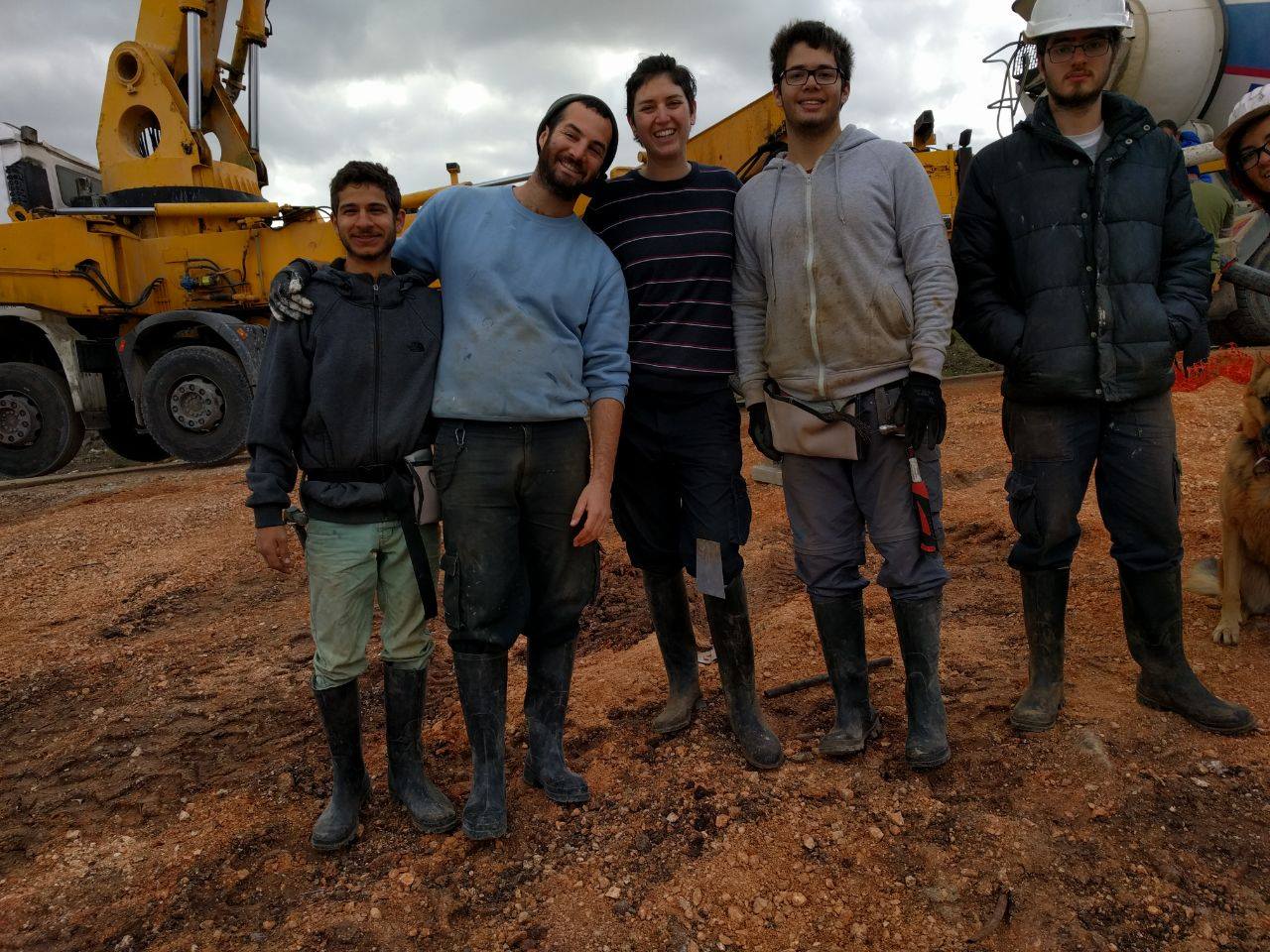
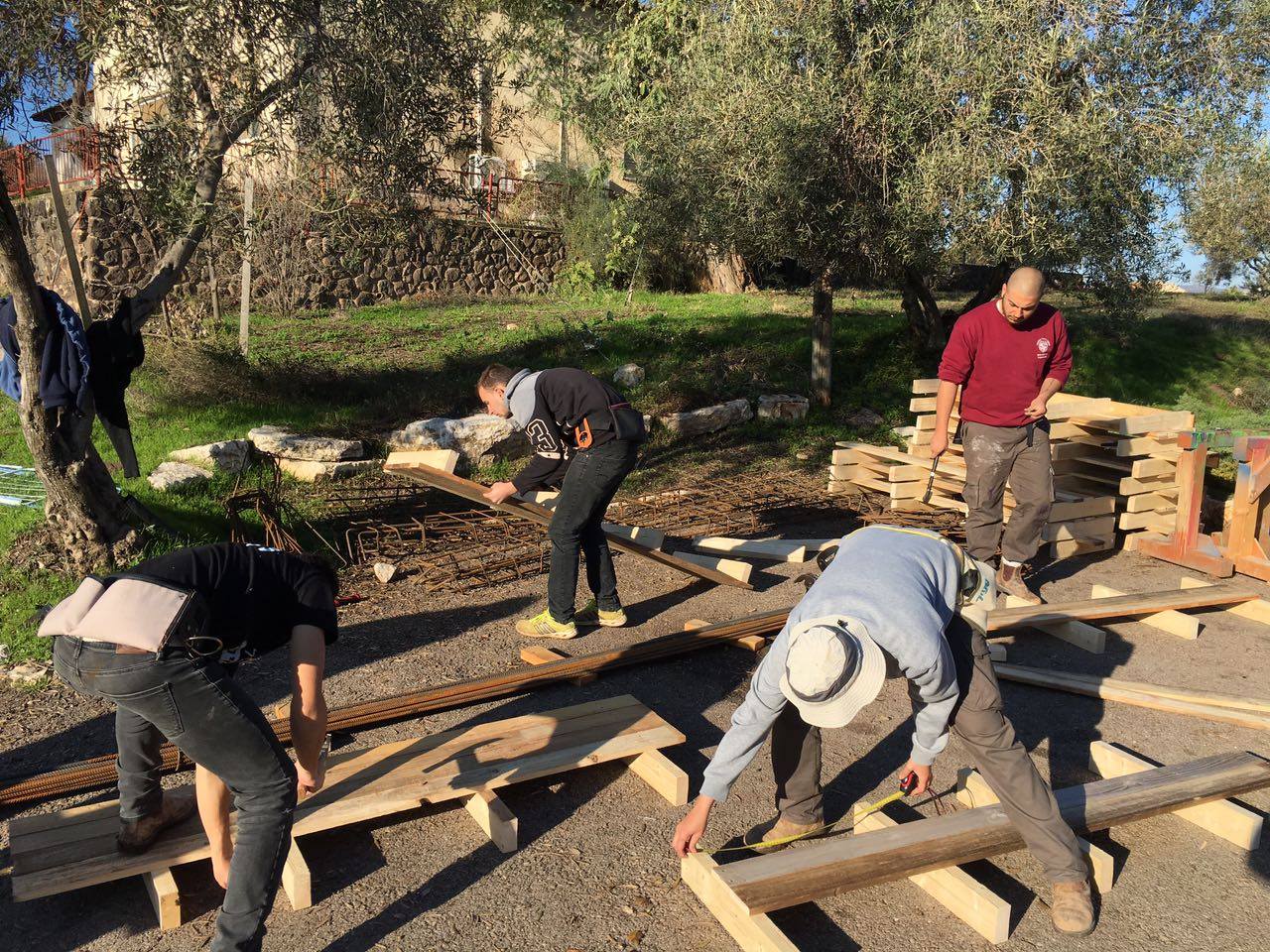

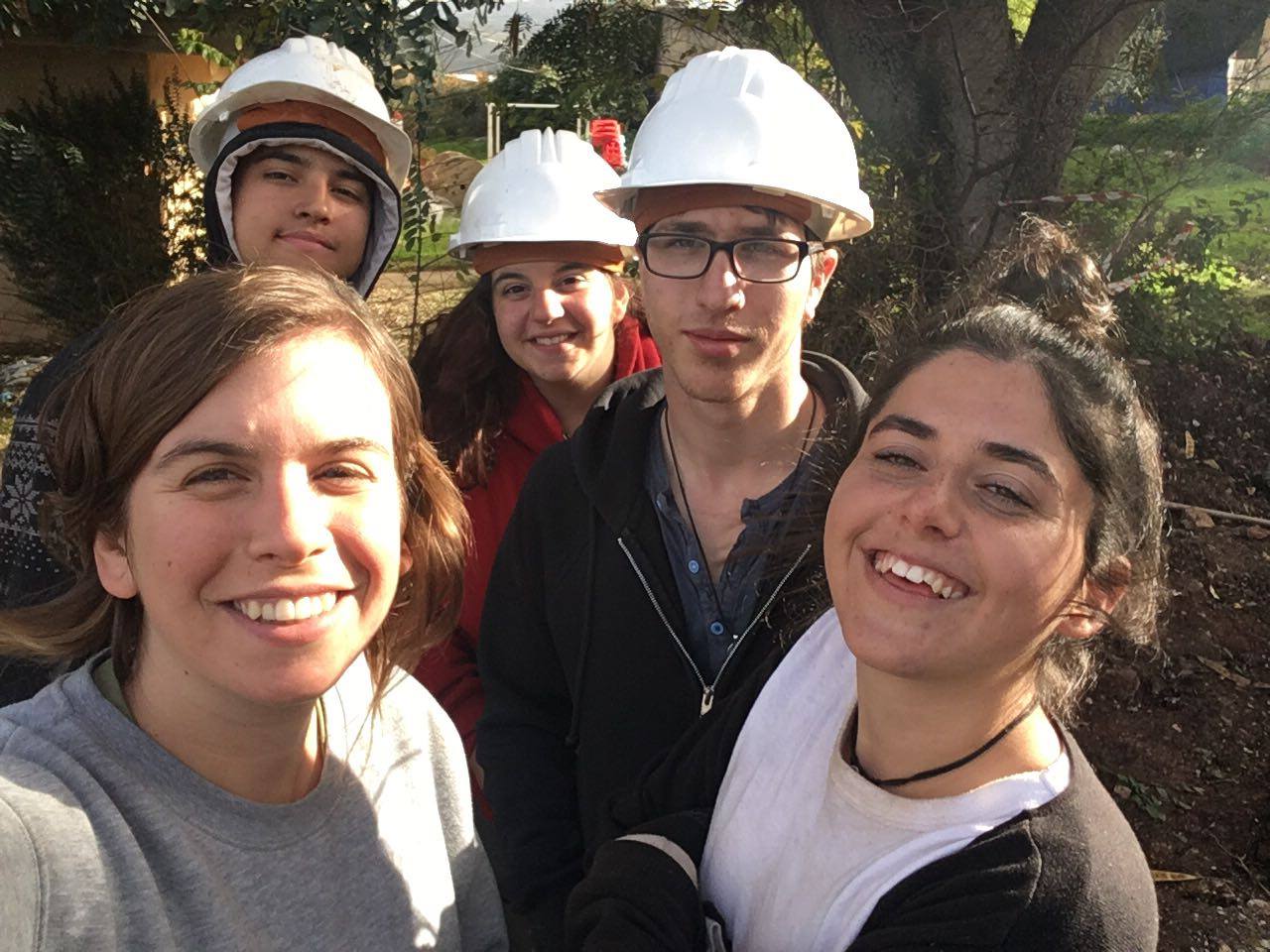
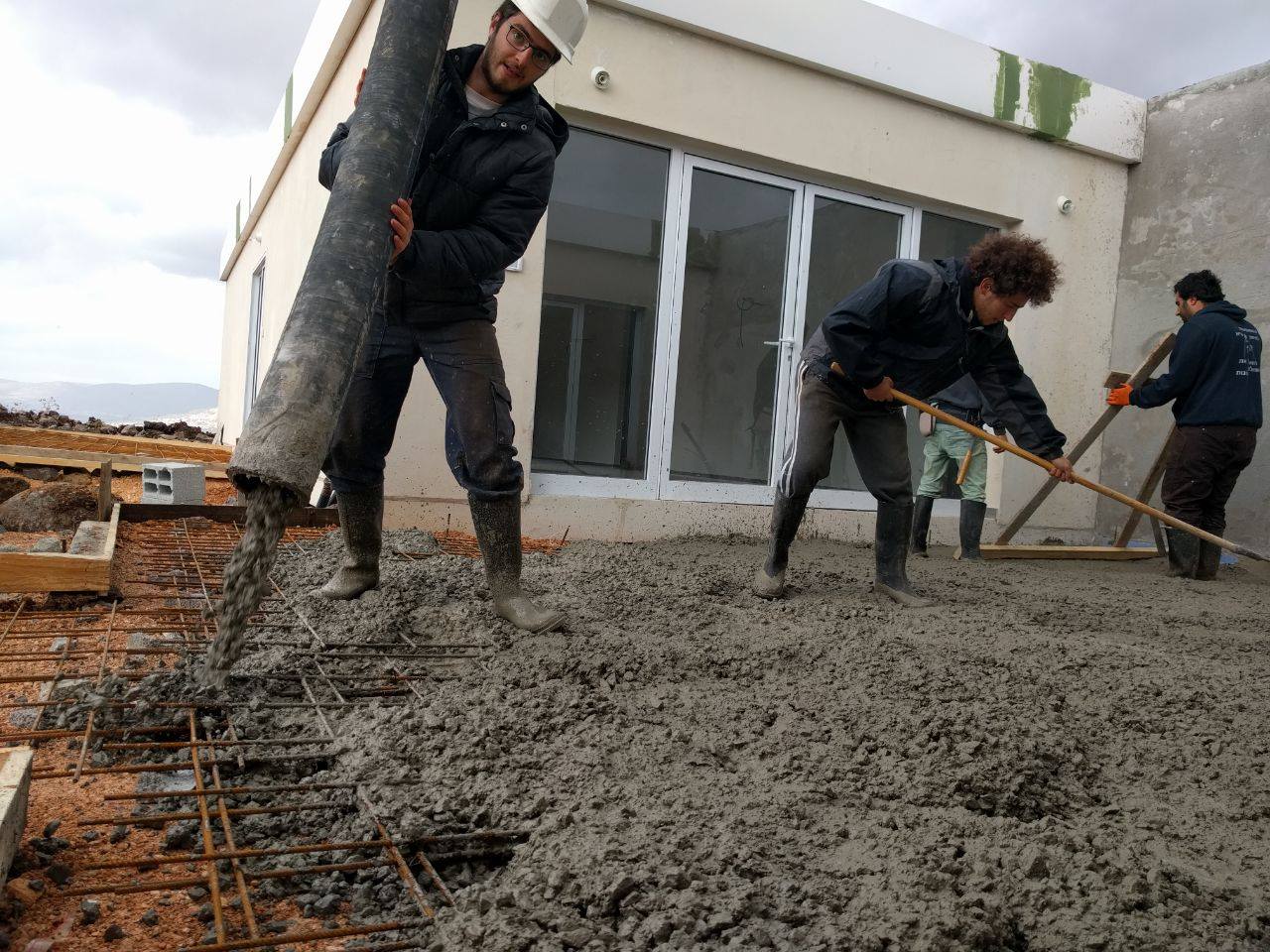
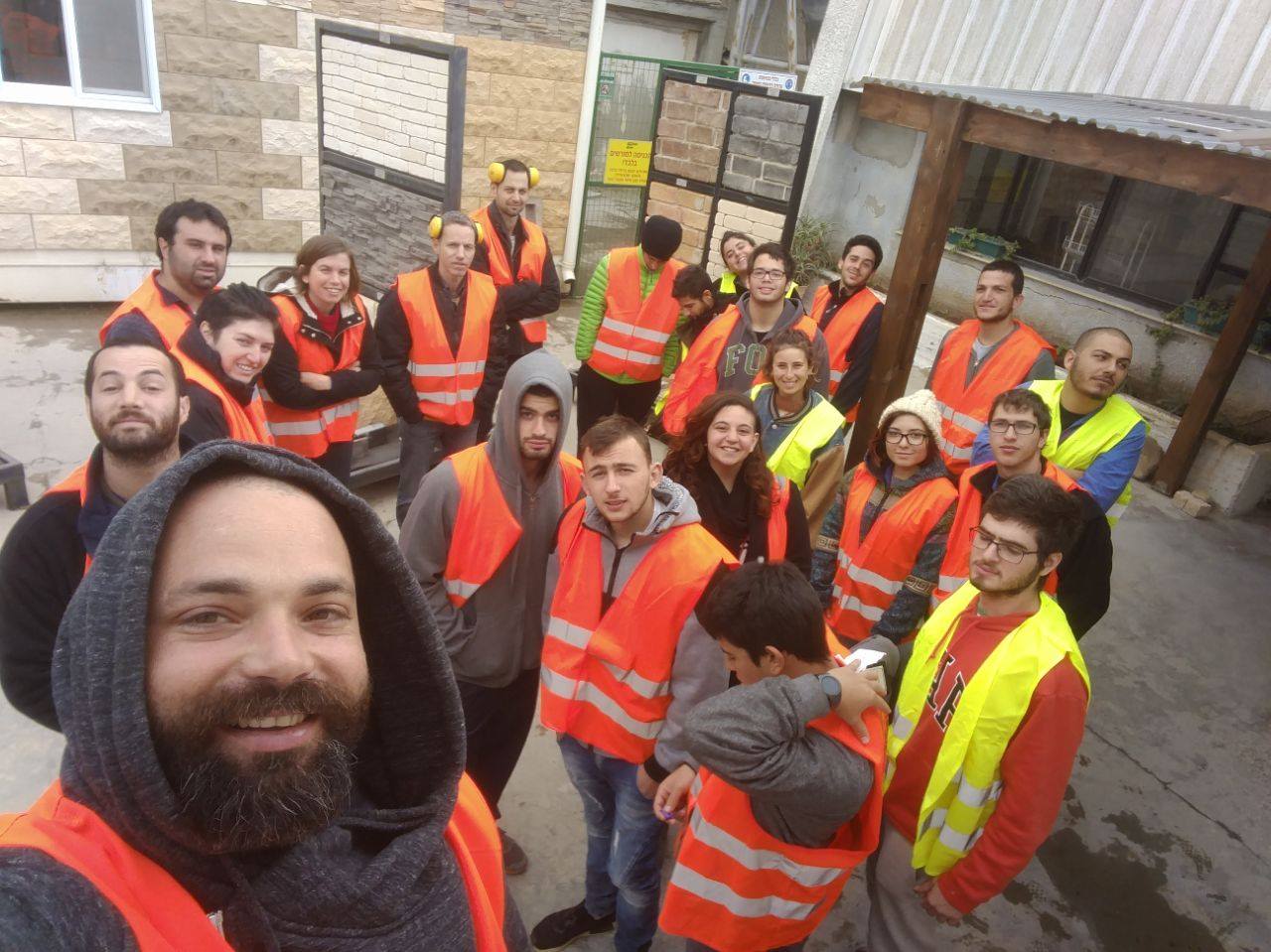

"The story of the aliyah that is known as "illegal" from North Africa before Israel was founded, and the tales of the people of "MACHAL" (Volunteers from abroad) – and the activists in the different resistances – are a heroic epic that is still not known in it's entire scope, and only single chapters of it were revealed to us in recent years. It drove many of our brothers to acts of sacrifice and devotion for the noble cause of liberating their people. They made their way in treacherous roads, in darkness, and in stormy waters, and in their hearts shined as a lighthouse Zion and Israel. They came by the thousands, in harsh times, to lend a shoulder and take their part in the upbuilding of Israel."
Former Israeli President Chaim Hertzog
Today, 23rd of Tevet, January 10th, 56 years ago, the Ship named "Egoz" sunk on it's way from Morocco to Gibraltar and on it 44 men, women and children on their way to Israel. The sinking of "Egoz" is another formative event in the persistent struggle of the Jewish people for the founding of the state of Israel and the sometimes heavy prices on the way to fulfilling their dream.
In 1956, after Morocco received it's independence from France, aliyah was forbidden, and between 1956-1961 the aliyah from Morocco was done secretly, mainly through the underground Jewish resistance in Morocco. the Jews had to leave their house at nighttime in the dark, board ships to European locations and from Europe continue to Israel. This is how about 30,000 Jews made aliyah in the time of the secretive aliyah.
The "Egoz" ship was an a aliyah ship, that was used to smuggle Zionist Jews from El-Chuseima beach in north Morocco to Gibraltar port, on their way to Israel.
The ship made it's way 12 times, and on the 13th time during the cruise on the 23rd of Tevet 5721 (the night between January 10th and 11th 1961) it sunk, while on board were 44 Maapilim: men, women, elders and children. None of them survived, and they all died in sea. 22 bodies were retrieved from the water and were brought for burial in the Jewish cemetery in El-Chuseima in Morocco. The remaining bodies were lost in the deep forever. Many international attempts were made to exhume the bones of the 22 Maapilim that were buried in Morocco, and bring them to eternal rest in Israel. on December 1992, with growing diplomatic relations between Morocco and Israel, King Hassan the 2nd agreed to transfer the bones from Morocco to Israel. After a secret operation to bring the bones to Israel, that was called "Ayelet Hashachar", they were buried in Mount Herzel in a national ceremony.
The caskets of the 22 Maapilim were brought to Israel on Wednesday Kislev 7th 5753, and were buried in a national funeral in Mount Herzel on Kislev 19th (14.12.1992), following the caskets and paying their respects: the President of Israel, the Prime Minister, the head Rabbis of Israel, the Supreme Court Judges, different MKs and elected officials, the families of the "Egoz" victims together with the families of soldiers who have fallen in combat, and masses from the Israeli public.

The "Egoz" victims (from the newspaper)
Today madrichim and madrichot from NOAL participated in the memorial ceremony that was held in Ashdod, and was organized by the Active Resistance Members, Illegal Immigration and Prisoners of Zion (people incarcerated for Zionist activism) in North Africa Organization, in partnership with the Ashdod municipality.
Omri Cohen, a madrich in snif Afula, about the choice to add the memorial for the ship's sinking as part of the movement calendar: "our movement decided in the last veida to broaden it's ethos. That way we can deepen our covenant with our society, so everyone has a place, so everyone will have a history – a vertical line they know they are part of. To explore and discover the Zionism and the roots of rebellion of all of our people gives us responsibility. It's a kind of calling of responsibility and passing the torch – your fathers did it decades ago, and now it's your turn, our turn."
This day is also a day where we tell the story of the extensive Zionist activity in the North African countries and inside it the huge contribution of the Chalutzik Zionist Youth Movements. We, the young generation, see the heroic actions of the Zionist youth movements in Morocco specifically and in North Africa in general as a decree of responsibility for our movement.
Let it be so their story keeps lighting our life here in the state of Israel that many dreamed of reaching.
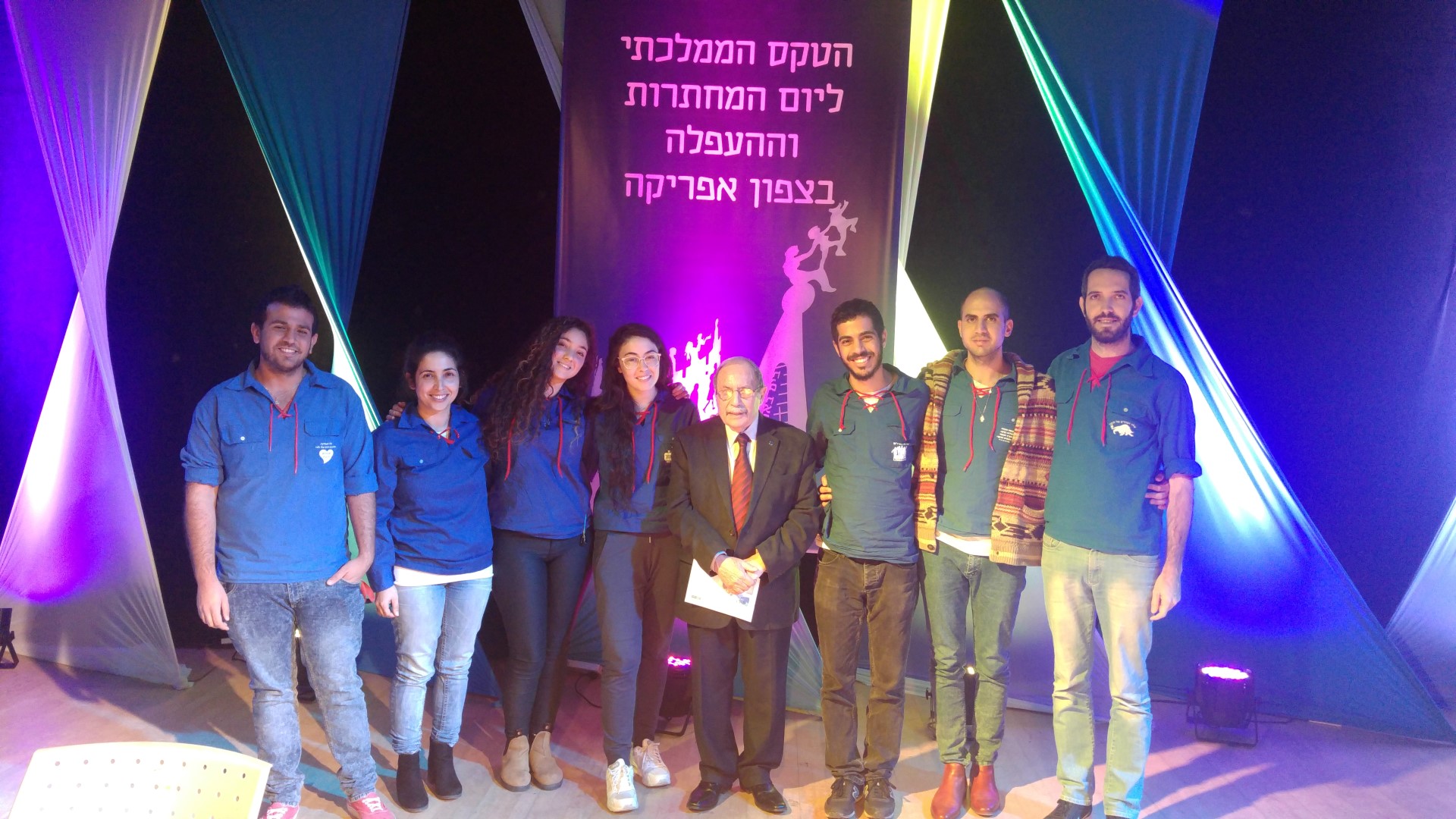
Members of NOAL with Meir Knafo, one of the commanders of the "Misgeret", the Zionist Jewish Resistance in Morocco, head of the organization mentioned above.
"סיפורה של העלייה הקרויה "בלתי ליגלית" מצפון אפריקה לפני קום המדינה, ועלילותיהם של אנשי מח"ל – מתנדבי חוץ לארץ – ופעילי המחתרות שם – הם אפופיאת גבורה שטרם נודעה בכל היקפה, ורק פרקים אחדים ממנה נגלו לפנינו בשנים האחרונות. הם הניעו רבים מאחינו למעשים של הקרבה ומסירות נפש למען המטרה הנאלצת של שחרור עמם. הם פילסו דרכם בנתיבות עקלקלות, במחשכים, ובמים סוערים, ובליבם זהרו כמגדלור ציון וארץ ישראל. הם באו באלפיהם, בעת קשה, להטות שכם וליטול את חלקם בתקומת ישראל."
נשיא המדינה חיים הרצוג ז"ל
היום, כ"ג בטבת 10/1, לפני חמישים ושש שנים טבעה ספינת אגוז בדרכה ממרוקו לגיברלטר ועליה 44 גברים נשים וילדים בדרכם לישראל. טביעתה של אגוז היא עוד אירוע מכונן במאבקו העיקש של עם ישראל להקמתה של מדינת ישראל ולתשלומי המחיר הכבדים לעתים בדרך להגשמת החלום.
בשנת 1956, לאחר שמרוקו קיבלה את עצמאותה מצרפת, נאסרה עליית יהודים לישראל, ובמשך השנים 1956-1961 העלייה ממרוקו נערכה באופן חשאי, בעיקר באמצעות המחתרת היהודית במרוקו. היהודים נאלצו לעזוב את בתיהם בחשכה, לעלות על ספינות ליעדים אירופאים ומאירופה להמשיך לישראל. בצורה זאת עלו כ-30,000 יהודים במהלך תקופת העלייה החשאית.
ספינת "אגוז" (פיסס) הייתה ספינת העפלה, שבאמצעותה הוברחו יהודים ציונים מחוף אל-חוסימה שבצפון מרוקו אל נמל ג'ברלטר, בדרכם לארץ ישראל.
הספינה עשתה את דרכה 12 פעמים, ובפעם ה-13 בעיצומה של ההפגה בתאריך כ"ג בטבת התשכ"א (הלילה שבין 10 ל-11 בינואר 1961) טבעה, כשעל סיפונה 44 מעפילים: גברים, נשים, זקנים וטף. איש מהם לא ניצל, וכולם נספו במצולות הים. 22 גופות נמשו מן הים והובאו לקבורה בבית העלמין היהודי באל-חוסימה שבמרוקו. הגופות הנותרות אבדו במצולות לעולמים. מאמצים רבים חובקי עולם נעשו כדי להעלות את עצמות 22 המעפילים שנטמנו במרוקו, ולהביאם למנוחות עולמים בישראל. בחודש דצמבר 1992, בעקבות התחממות היחסים בין ישראל לבין מרוקו, הסכים המלך חסן השני כי עצמות נספי הספינה אגוז יובאו ממרוקו לישראל. לאחר מבצע סודי להעלאת עצמותיהם, שנקרא "איילת השחר", נטמנו הנספים בטקס ממלכתי בהר הרצל.
ארונות כ"ב המעפילים הועלו ארצה ביום רביעי ז' בכסלו תשנ"ג ונטמנו בלוויה ממלכתית בהר הרצל בתאריך י"ט בכסלו (14.12.1992) אחרי ארונותיהם צעדו וחלקו כבוד: נשיא המדינה, ראש הממשלה, הרבנים הראשיים לישראל, שופטי בית המשפט העליון, נבחרי ציבור, משפחות חללי "אגוז" יחד עם משפחות השכל של מערכות ישראל והמוני עמך ישראל.

היום השתתפו מדריכים ומדריכות מהתנועה בטקס זיכרון מסורתי שהתקיים באשדוד שאורגן על ידי ארגון פעילי המחתרות, העפלה ואסירי ציון בצפון אפריקה בשיתוף עיריית אשדוד.
עומרי כהן, מדריך בסניף עפולה, על הבחירה להכניס את יום הזכרון לטביעת הספינה כחלק מלוח השנה התנועתי: "התנועה שלנו החליטה בוועידה האחרונה להרחיב את האתוסים שלה. זה בשביל להעמיק את הברית שלנו בחברה, כדי שלכולם יהיה מקום, כדי שלכולם יהיה היסטוריה – ציר אורך שהם ידעו שהם חלק ממנו. לחקור ולגלות את הציונות ושורשי המרד של כל העם שלנו נותן לנו אחריות. זה מעין צו של אחריות והעברת לפיד – אבותיך עשו את זה לפני עשרות שנים ועכשיו תורך, תורנו."
יום זה הוא גם יום שבו מספרים את סיפורה של הפעילות הציונית הענפה במדינות צפון אפריקה ובתוכה תרומתה האדירה של תנועות הנוער הציוניות חלוציות. אנו הדור הצעיר רואים במעשיהן ההרואיים של תנועות הנוער הציוניות במרוקו בפרט ובצפון אפריקה בכלל צו של אחריות לתנועתו.
מי ייתן וסיפורם ימשיך להאיר את חיינו כאן במדינת ישראל שרבים ורבות חלמו להגיע אליה.

חברי הנוער העובד והלומד עם מאיר כנפו ממפקדי ה" מסגרת" המחתרת יהודית ציונית במרוקו, יו"ר ארגון פעילי המחתרות העפלה ואסירי ציון צפון אפריקה.
תנועת הנוער העובד והלומד כואבת ואבלה על הרצח הנורא של סגן יעל יקותיאל ז"ל, בוגרת קן בורוכוב בגבעתיים, והיא בת 20 בלבד. יעל נרצחה בפיגוע הדריסה בארמון הנציב בירושלים ביום ראשון (8/1/17) ביחד עם עוד שלושה צעירים שנקטפו מעולמנו בטרם עת בגלל מעשה טרור נפשע שכולו רשע ושנאת האדם. שמות הנרצחים הנוספים: סגן שיר חג'אג', בת 22 ממעלה אדומים, סגן משנה שירה צור, בת 20 מחיפה וסגן משנה ארז אורבך, בן 20 מאלון שבות.
יעל הובאה היום בשעה 15:00 למנוחת עולמים בבית העלמין בקריית שאול. מאות בני משפחה וחברים הגיעו ללוות אותה בדרכה האחרונה. בין מלוויה הרבים היו גם קצין חינוך ראשי, תא"ל אבנר פז-צוק, וראש עיריית גבעתיים, רן קוניק.
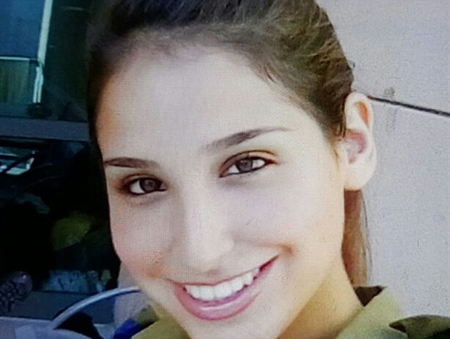
יעל יקותיאל ז"ל, הועלתה לדרגת סגן עם מותה. תמונה: דובר צה"ל.
יעל הייתה חניכה בקן מכיתה ד', חברה בקבוצת "זבנג", יצאה לסמינר הדרכה והדריכה את קבוצת "בלאגן" בקן בורוכוב. ענבל הראל, חניכה שלה כתבה: "כיתה ה', חוזרים מטיול, יעל המדריכה צריכה להישאר בגינה לחכות שיבואו לאסוף אותה ואני מחכה איתה. אם יש כמה רגעים מעטים שאני לא יכולה לשכוח בתור חניכה, אחד מהם, זה את הרגע המאושר הזה, צוחקות עד שכואבת הבטן ומאושרות באמת בלי זיופים. מישהו תיעד את הרגע הזה, אז אני גם לא אשכח את הרגע המיוחד הזה אף פעם. כשאני חושבת עלייך ועל הרגע הזה אני חושבת על כמה מדריכה מדהימה ומשמעותית היית בשבילי וכמה אני אוהבת ומעריכה אותך. יהיה זכרה ברוך."
דניאל באבו: "יעל הדריכה אותנו בכיתה ה', בשנה השנייה שלנו בנוער העובד והלומד בקן בורוכוב. אנחנו זוכרים לא מעט פעולות איתה, זיכרונות ממנה שבאמת הייתה משקיעה בנו ונותנת מעצמה, אכפתית ואוהבת. זיכרונות יפים עם געגוע". הראל, בת 15, מספרת כי "בתור חניכים קטנים היא באמת הייתה מדהימה ומודל לחיקוי. במיוחד שאני ותמיר מדריכים היום כמעט את אותה שכבת גיל וזה מעלה המון זיכרונות. היא הייתה פשוט בחורה מדהימה וחייכנית ואוהבת והיה לה אכפת מהחניכים. אנחנו זוכרים המון פעולות וטיולים, בעיקר זיכרונות יפים של ילדים שבאו לתנועה וקיבלו את הכי טוב שאפשר".
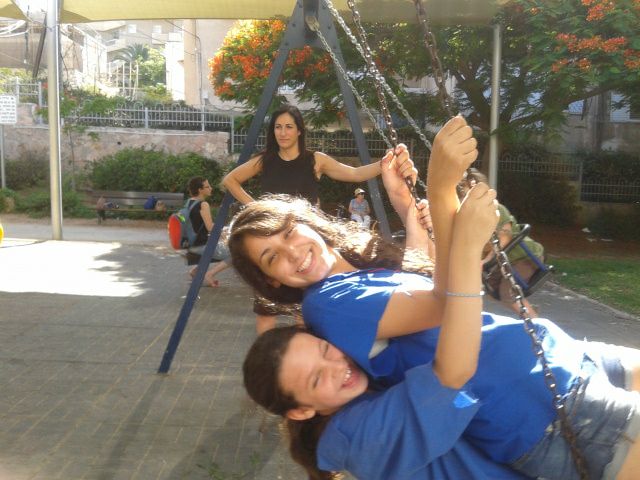
יעל יקותיאל ז"ל הדריכה את קבוצת "בלאגן" מקן בורוכוב. "מדריכה מדהימה ומשמעותית"
"אני חושב שהיא הייתה דמות משמעותית בשביל כולנו", אומר תמיר הלר, גם חניך בקבוצת בלאגן: "כולנו זוכרים שהיא הייתה מדריכה משקיענית ואכפתית. אני פגשתי אותה בערך לפני חודשיים ברחוב והיא סיפרה לי קצת על הצבא ואני על ההדרכה שלי בתנועה, זו הייתה מין סגירת מעגל בשבילי לפגוש אותה אחרי שלא ראיתי אותה כל כך הרבה זמן".
באבו מוסיף כי "לקח המון זמן לעכל ולקלוט. ברגע שאתמול שמענו על הפיגוע ושהיא הייתה אחת הנפגעות, נזכרתי שבסוף שנה כשהיא עזבה אותנו היא עשתה לנו מין סרטון פרידה כזה שהיום די אירוני ועצוב – עם 'שיר פרידה' של שלמה ארצי. רואים תמונות שלנו בנפרד אתה, תמונות מהפעולות, מהמחנות, מאושרים. באמת סרטון שהוא נוגע ללב ועצוב".
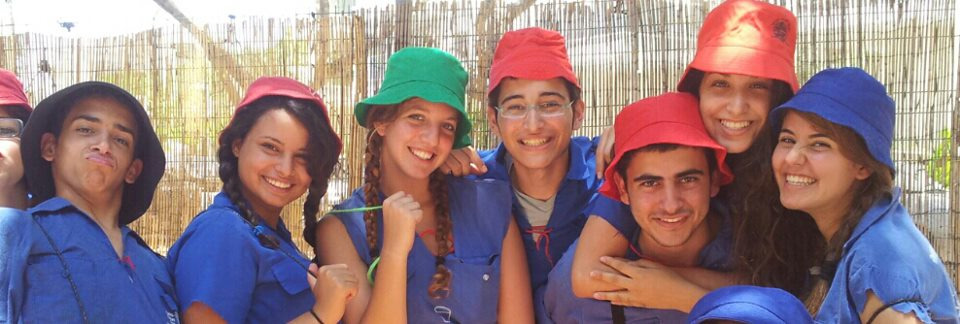
יעל עם חברים מהקן. שנייה מימין
נירית הררי, שהדריכה עם יקותיאל בקן בורכוב ומכירה אותה מבית הספר היסודי למרות שלא למדו יחד מספרת כי יצאה להדרכה בתנועה בזכותה. "יצאנו ביחד בכיתה ט' לקורס מדריכים שהיא שכנעה אותי לצאת אליו, אני לא רציתי והיא לקחה אותי. בעקבות זה הדרכנו ביחד בכיתה י' בקבוצת 'בלאגן'. היא הייתה מדריכה מאוד משקיעה, נתנה מעצמה הכל. לא ויתרה אף פעם על אף חניך ועשתה הכל מהלב. הייתה גם חברה מאוד טובה שלי".
"היא הצליחה להיכנס מהר מאוד ללב של אנשים כי היא תמיד נתנה את כולה", אומרת הררי. "אתמול היה בעיקר הלם גדול מאוד. זה התחיל כשמועה שהיא רק נפגעת חרדה ואז כשנאמר שהיא נרצחה אז לא האמנו, לא רצינו להאמין עדיין, פשוט היה שוק טוטאלי. זה גם היה היום הראשון שלה בתפקיד כקצינת הסברה, זה היה סיור שהיא עבדה עליו קשה והתרגשה ממנו ולא הספיקה להעביר אותו. היא הייתה אדם מאוד מיוחד שנתן המון לעולם, היה לה חיוך תמיד. הייתה יקרה וטובת לב".
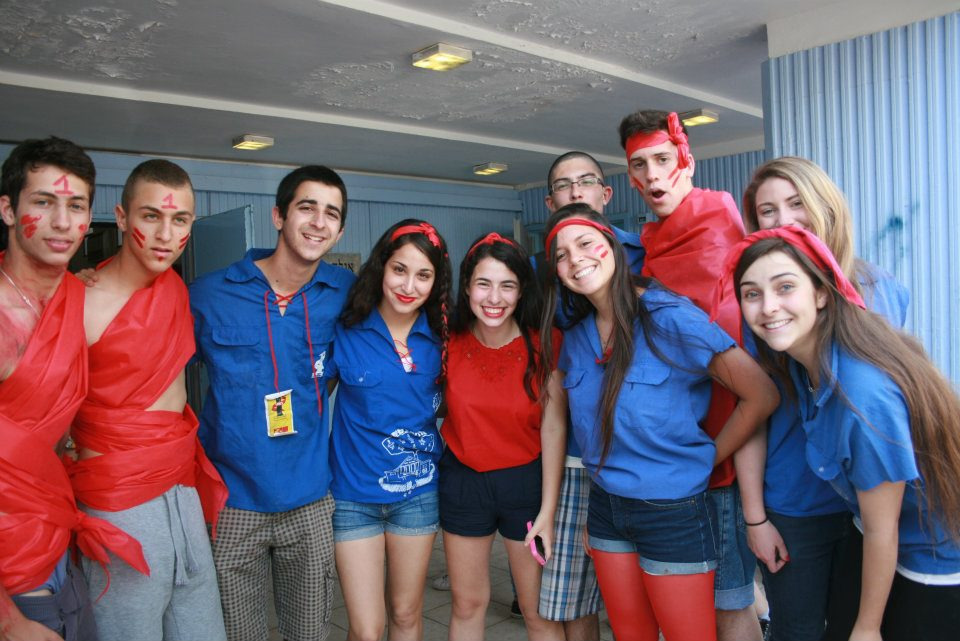
בצעדת אחד במאי בגבעתיים. יעל באמצע, רביעית משמאל.
מכאן אנחנו רוצים לשלוח את תנחומינו הכנים ולהשתתף באבלה הכבד של המשפחה והחברים ושל כל משפחות הנרצחים ולאחל החלמה מהירה לפצועים, ביניהם דנה אופיר, אף היא הייתה חניכה בקן בורוכוב.
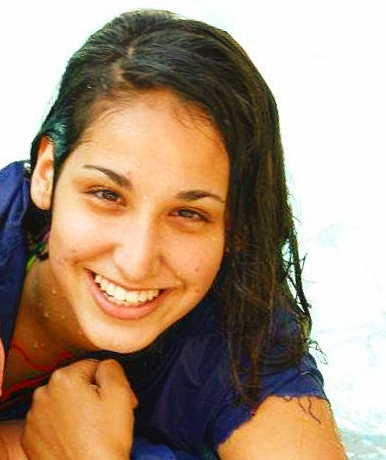
פנינה נחום, קומונרית בקן רמב"ם וחברה בגרעין נוארה בחוות ההכשרה בחולון, נשאה היום דברים בעצרת "באים לכיכר – נלחמים על אחדות". העצרת אורגנה ע"י עמותת גשר בעקבות פוסט מרגש וויראלי של זיו שילון בעקבות הכרעת הדין במשפטו של אלאור עזריה.
שמי פנינה נחום מתנועת הנוער העובד והלומד.
באתי הערב לכיכר, כי גם אני מודאגת כמוכם.
אין לי את האפשרות להסתיר שבזמן האחרון אני מרגישה שהחברה שלנו הולכת לכיוון לא טוב בכלל.
יש לי בקשה ממי שנמצא פה היום.
בואו להילחם בקרע בעם ובשנאת החינם שהפכה לנחלת רבים בעם.
אנחנו חייבים להילחם בשביל שתהיה אחדות וסולידריות חברתית. כשאנחנו מדברים על אחדות בעם, אנחנו חייבים לדבר על דמוקרטיה. אלה חוקי המשחק שמאפשרים לנו לא להסכים אחד עם השני אבל לחיות ביחד.
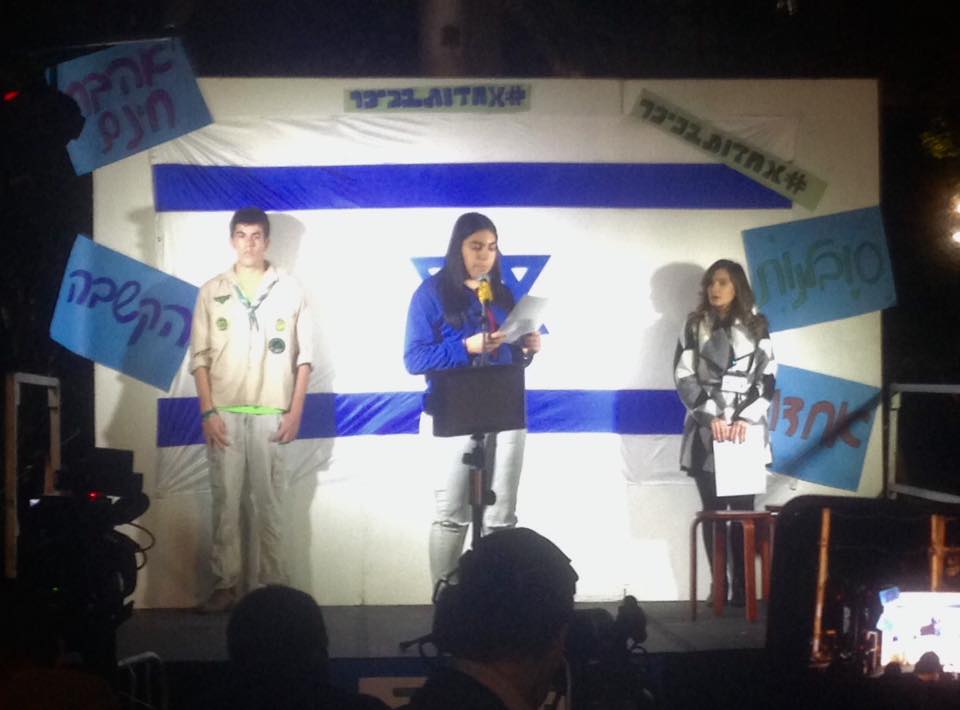
פנינה נחום, קומונרית בקן רמב"ם וחברת גרעין נוארה בחוות ההכשרה: "אני מאמינה שעל בני הנוער בישראל מוטלת אחריות גדולה על עיצוב דמותה של הדמוקרטיה הישראלית. כי בחברה הישראלית אין מקום להסתה – רק לשיח." אין לנו צה"ל אחר, אין לנו עם אחר.
אני אשתף אתכם שבתקופה האחרונה אני חוששת מאוד מאלה שמוותרים על החברה והמדינה היקרה שלנו ומתייאשים. מאותם אנשים שמרימים ידיים במקום לזעוק בקול גדול "אין לי ארץ אחרת" ולהתחיל להילחם ולהוביל לשינוי על זה שארצנו לא תבער.
כיום אני מרגישה שזאת החובה המוסרית והאזרחית שלי לחנך את החניכים שלי לשירות משמעותי. אני מחנכת אותם לזכור תמיד שיש לנו צבא אחד ושאנחנו חייבים להיות כפופים לחוקי צה"ל ולאמירות הערכיות של הרמטכ"ל. הסתה כנגד שופטים ומפקדי צה"ל כמוה כהסתה כנגד כל אחד ואחת מאיתנו .כל פגיעה בצה"ל היא פגיעה בדמוקרטיה.
בדמוקרטיה רק למדינה יש מונופול על הכוח, אחרת נחיה בחברה שתדרדר מהר מאד לאלימות.
הגעתי לכאן היום לכיכר רבין איפה שלפני 211 שנה נפגעה קשות הדמוקרטיה הישראלית כדי לומר שעליי גינויים אלה לא ישפיעו על המוטיבציה שלי להתגייס לצבא ושאני אפילו שמחה ששנה הבאה אני הולכת לצבא שהוא חלק מדמוקרטיה. צבא ששומר על ערכיי היסוד שלו ולא נתון תחת לחצים חברתיים או פוליטיים. אני מזכירה להם שוב ושוב שמי שמנסה לפגוע בצה"ל פוגע במדינה ובדמוקרטיה.
אני מאמינה שעל בני הנוער בישראל מוטלת אחריות גדולה על עיצוב דמותה של הדמוקרטיה הישראלית. כי בחברה הישראלית אין מקום להסתה – רק לשיח.
אין לנו צה"ל אחר, אין לנו עם אחר.
אני אסיים ואגיד, אנחנו לא צריכים להסכים על הכל אנחנו רק צריכים שהיה לנו אכפת אחת מהשנייה.
לא נותר לי אלא לקוות שמכיכר רבין תצא הבשורה.
בשורה של אחדות שאנחנו כל כך זקוקים לה.

אלפים בעצרת בכיכר רבין. "נלחמים למען האחדות"